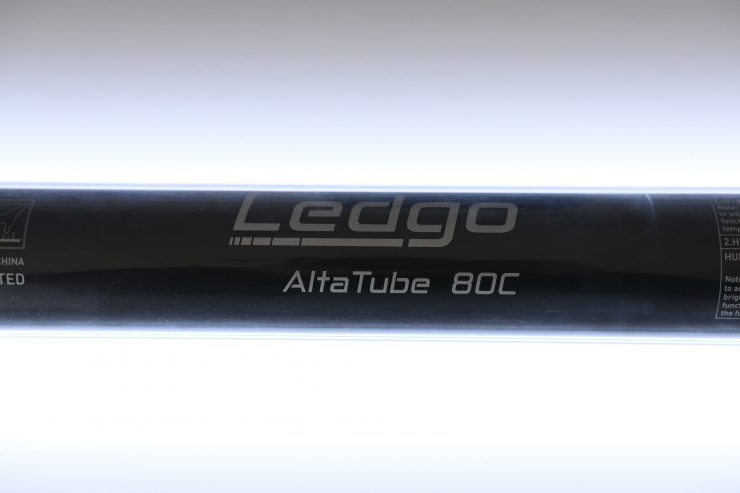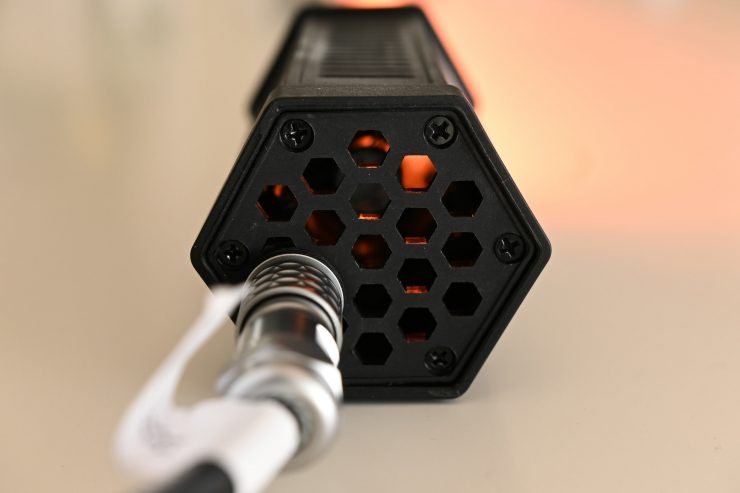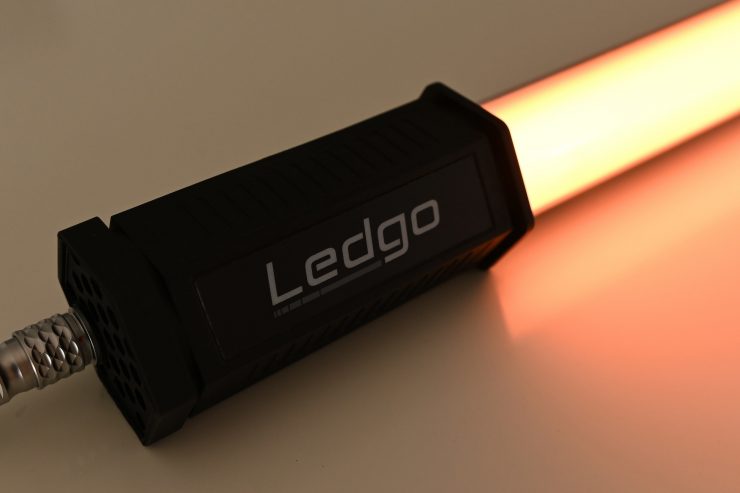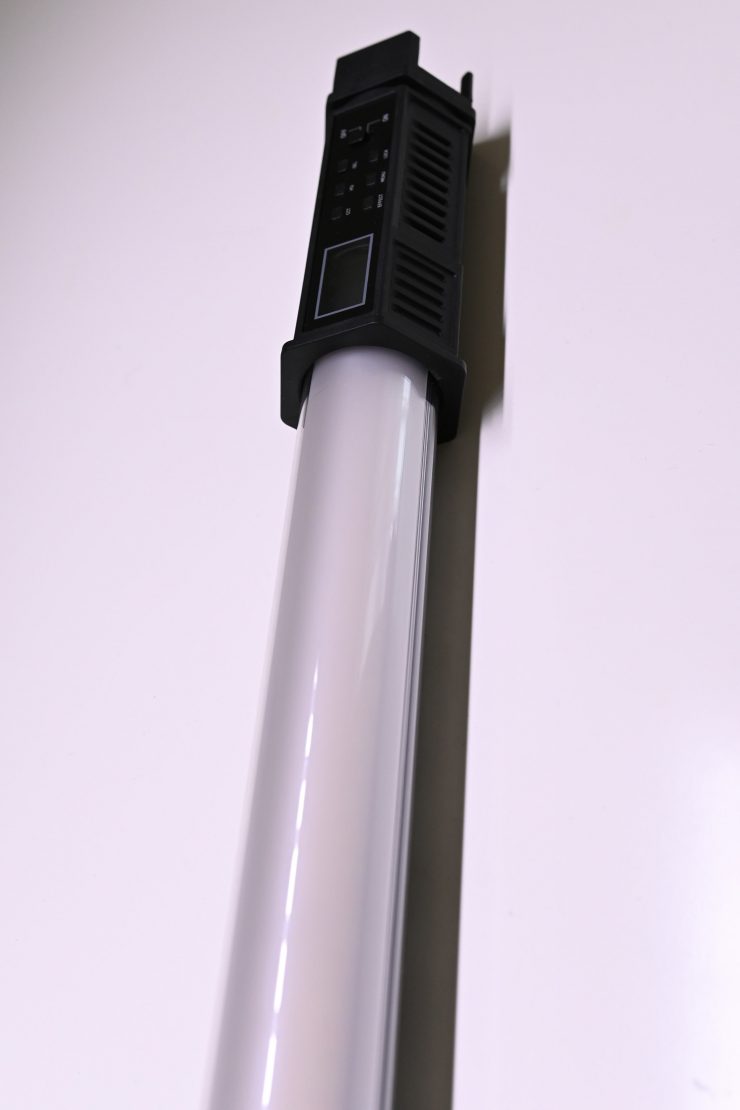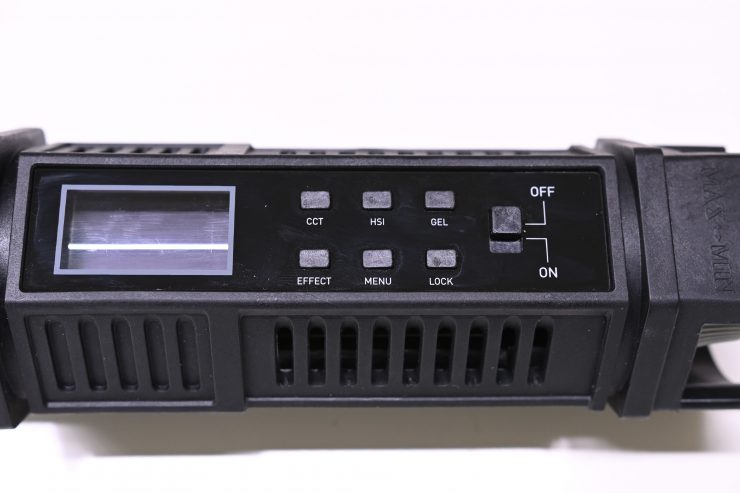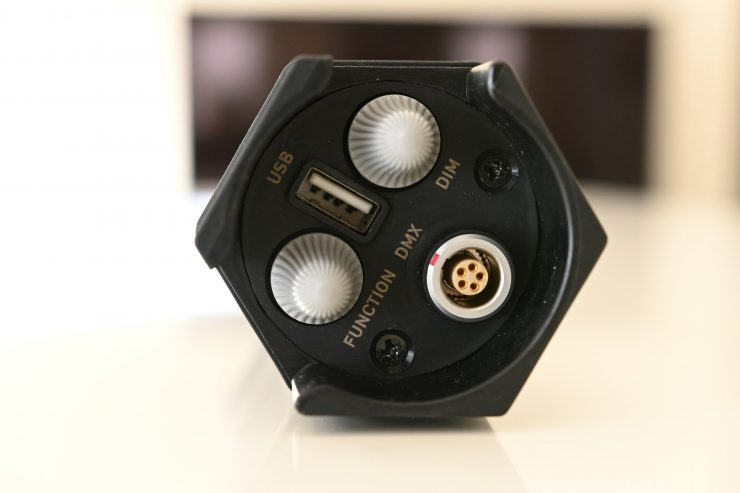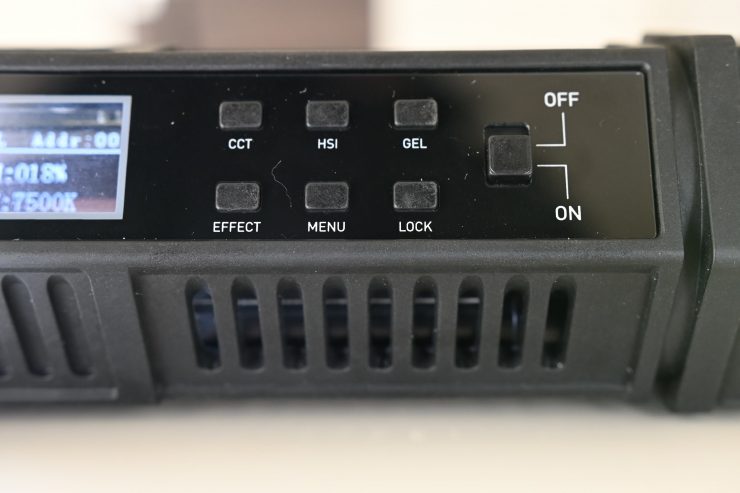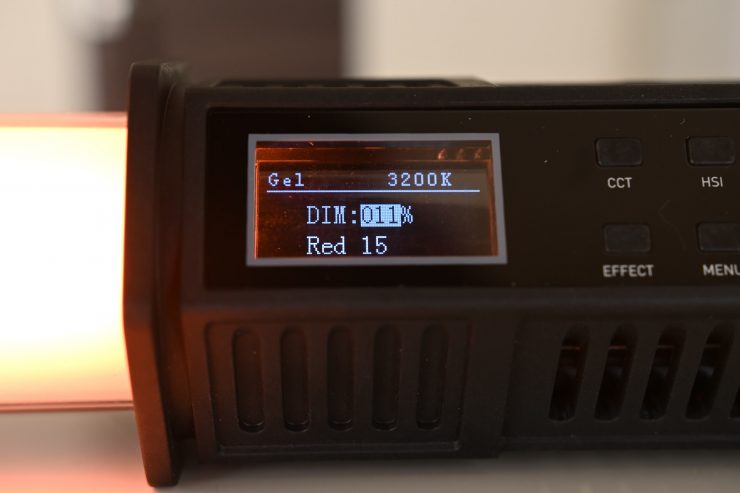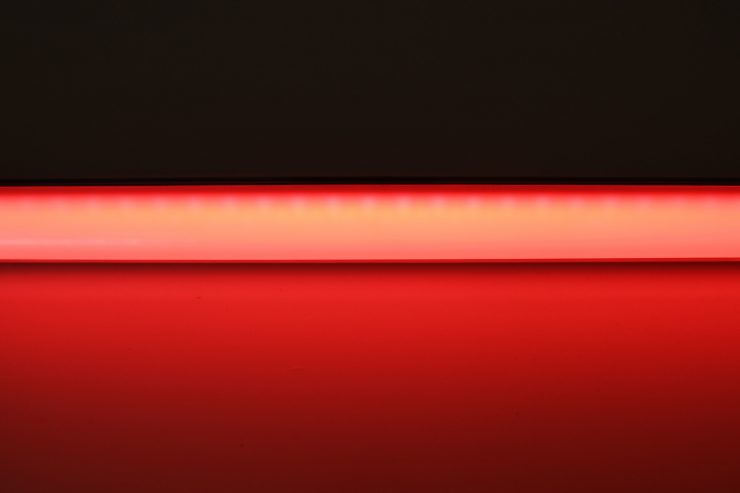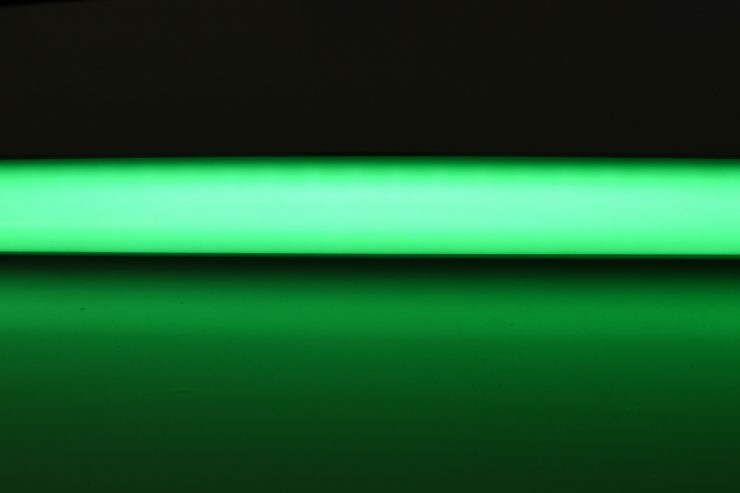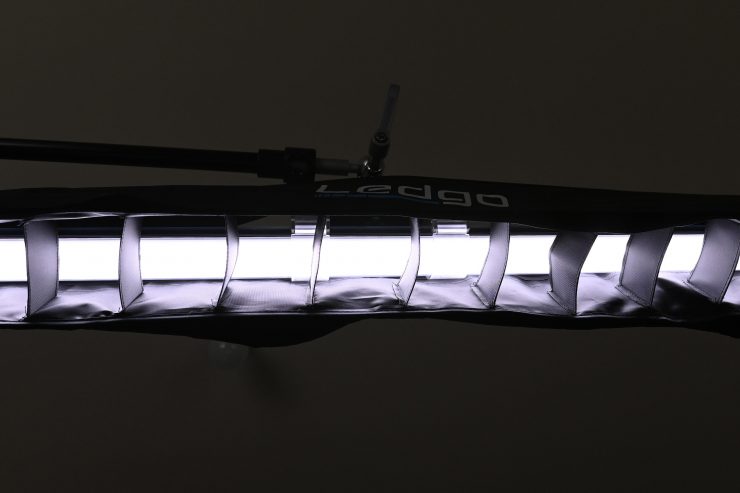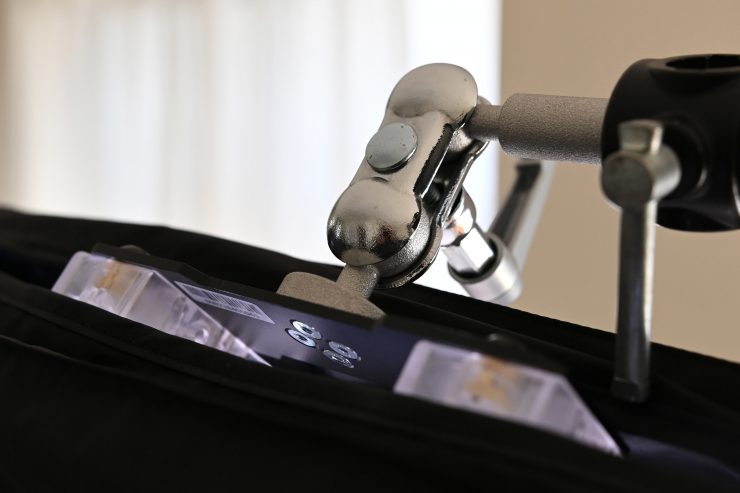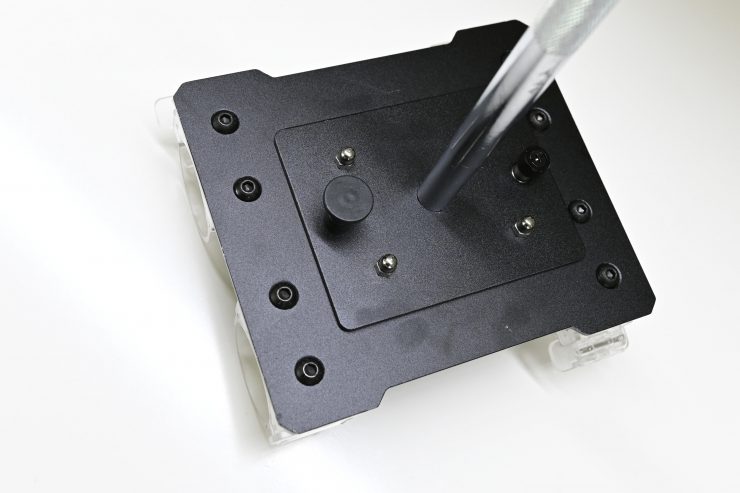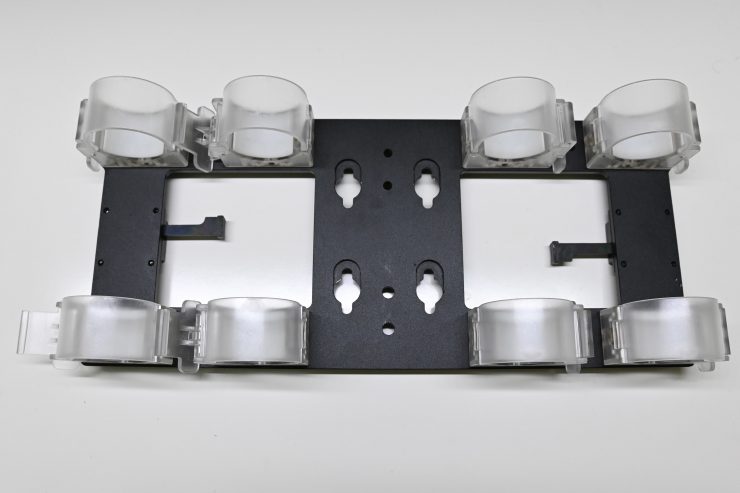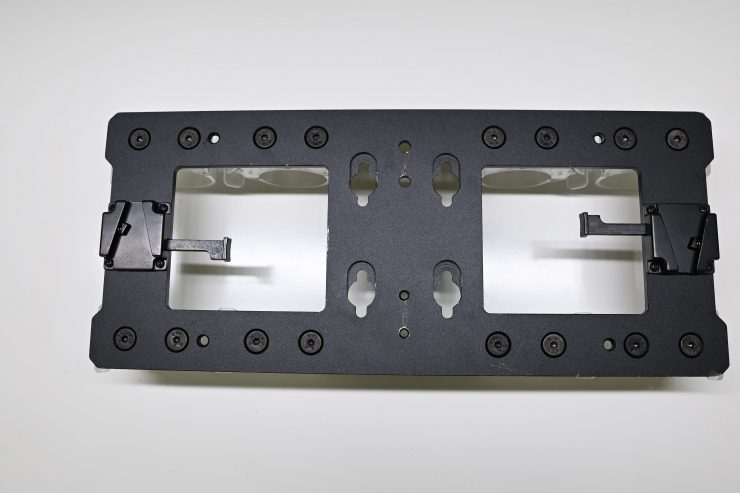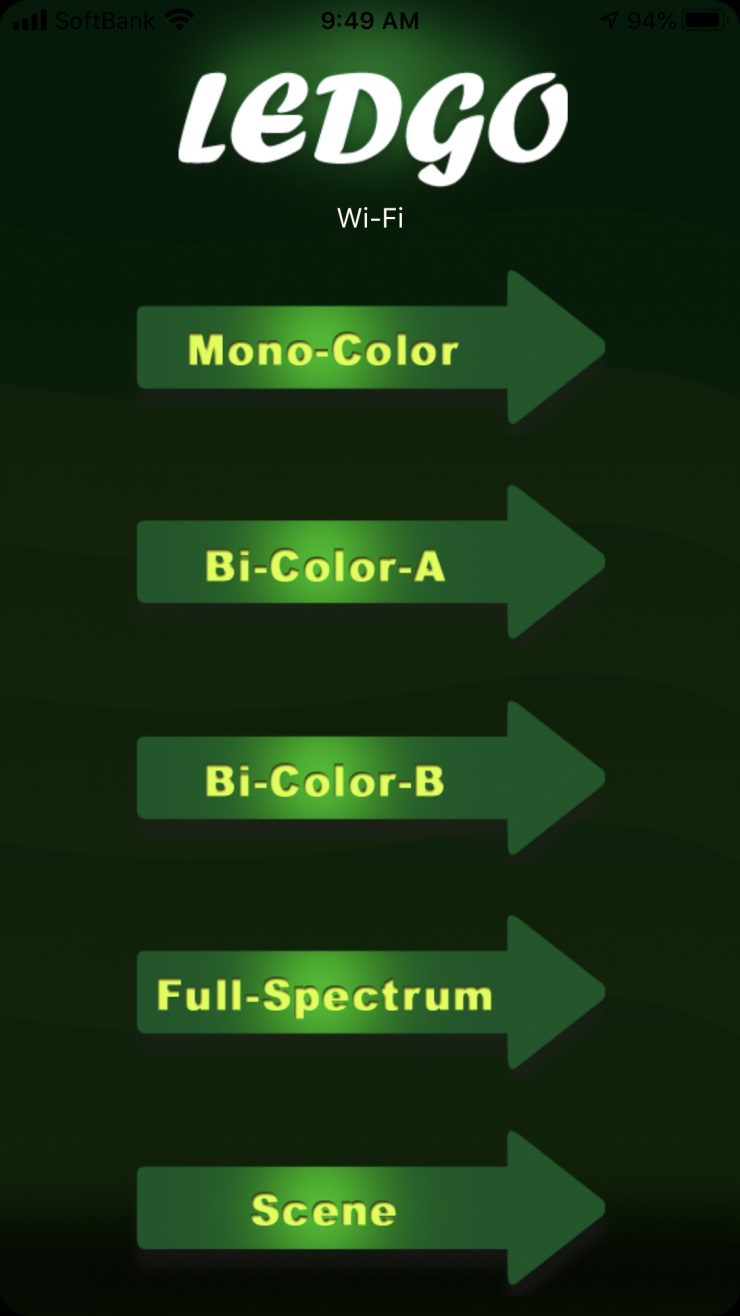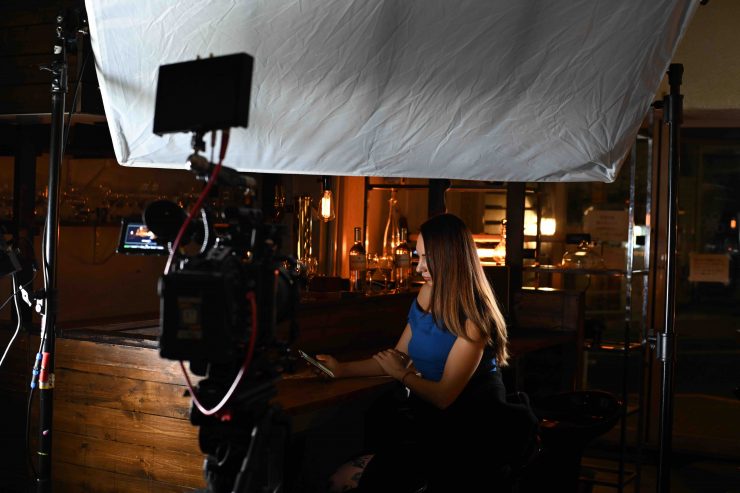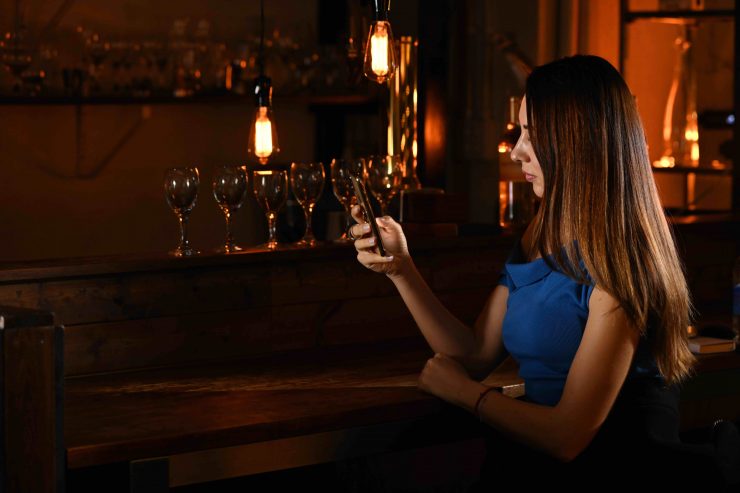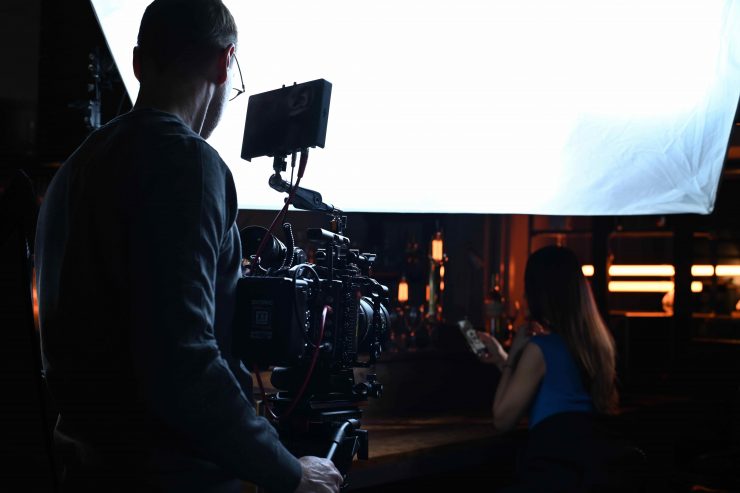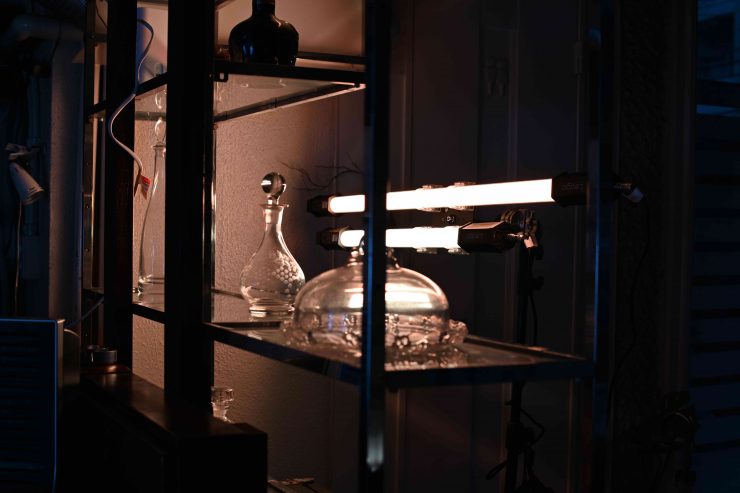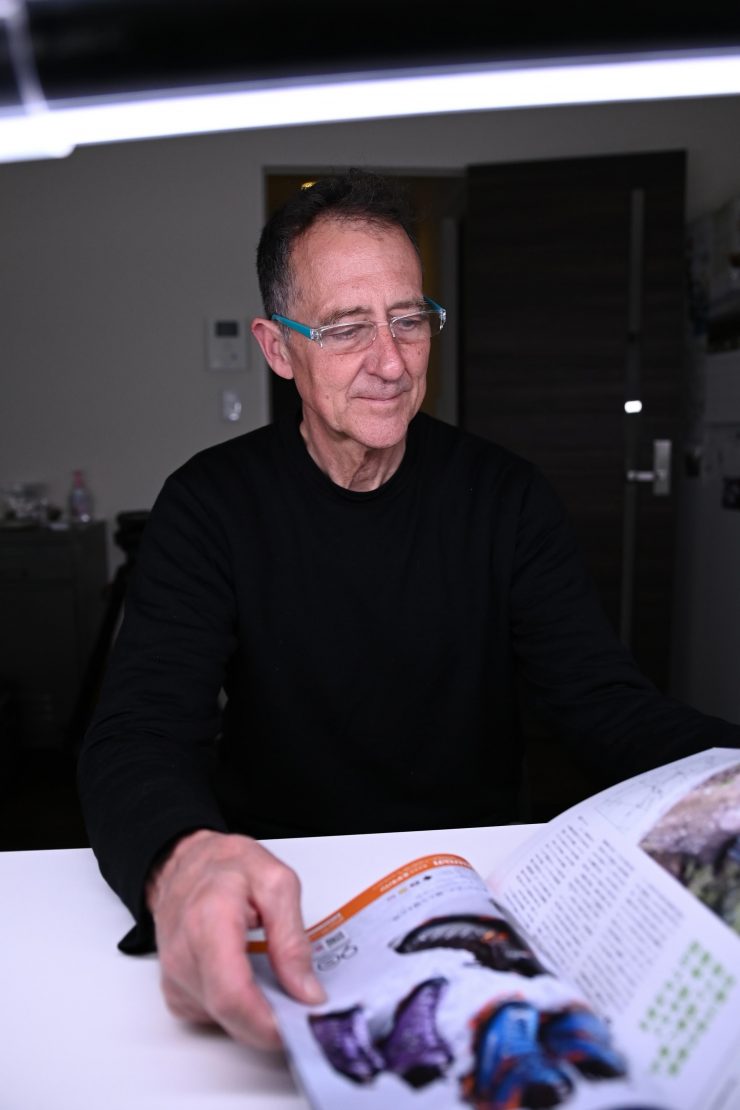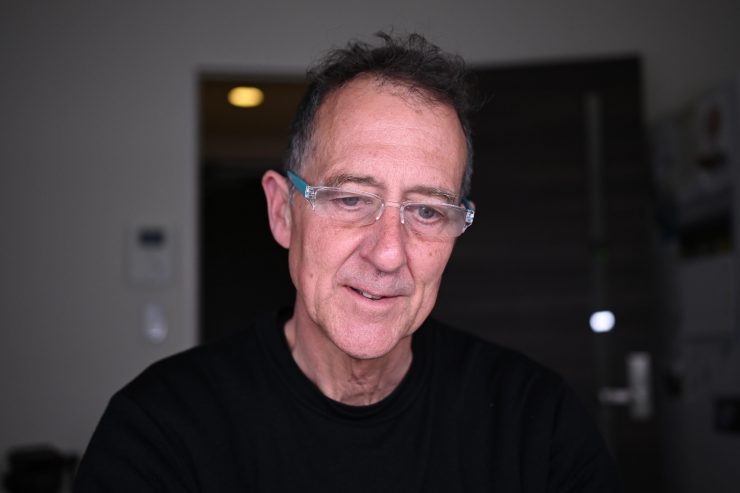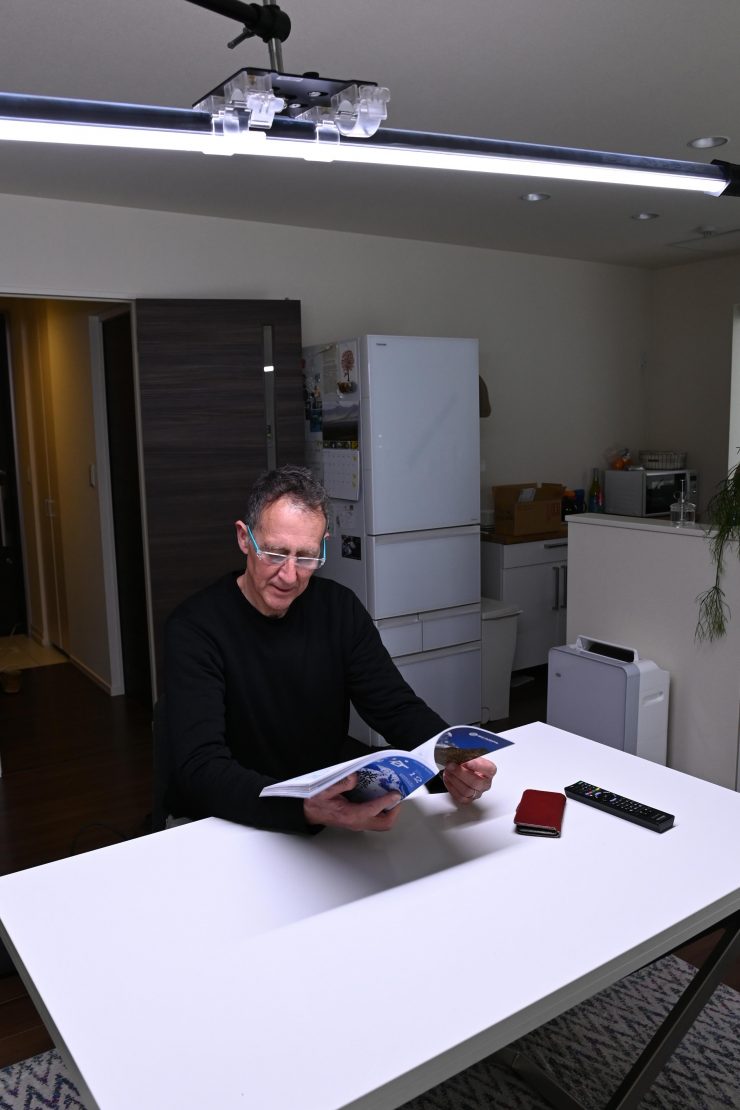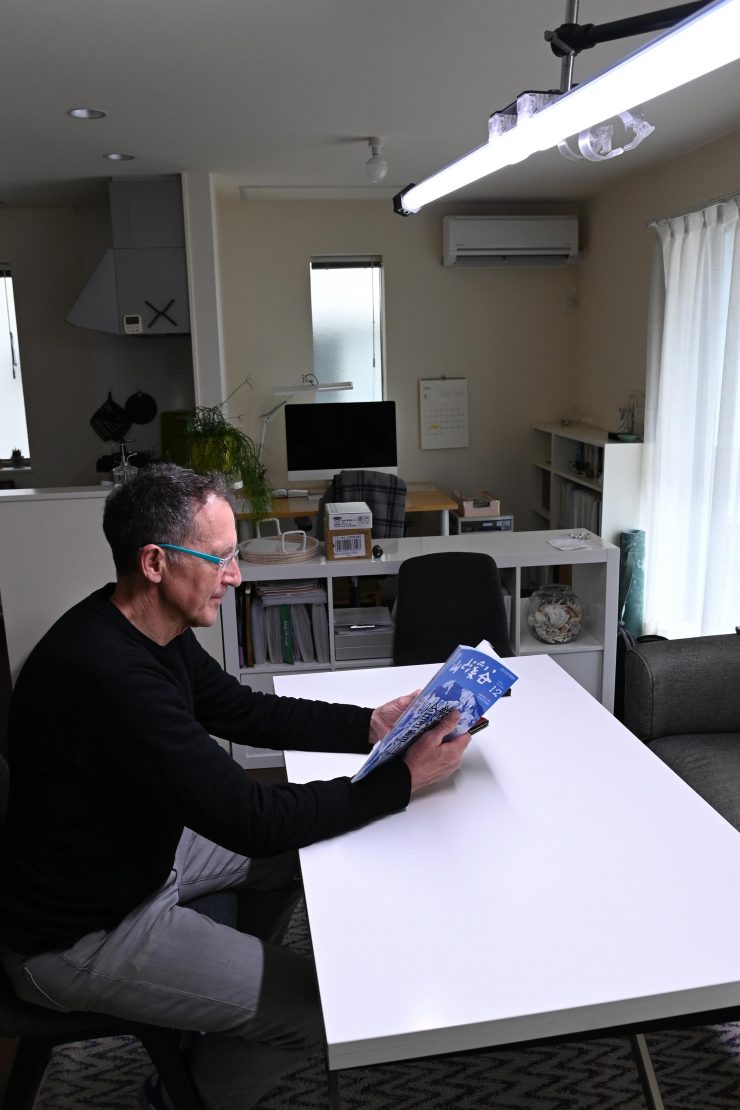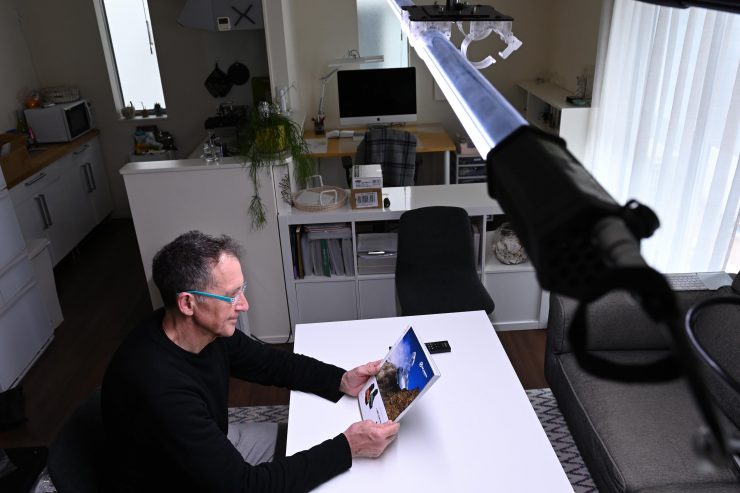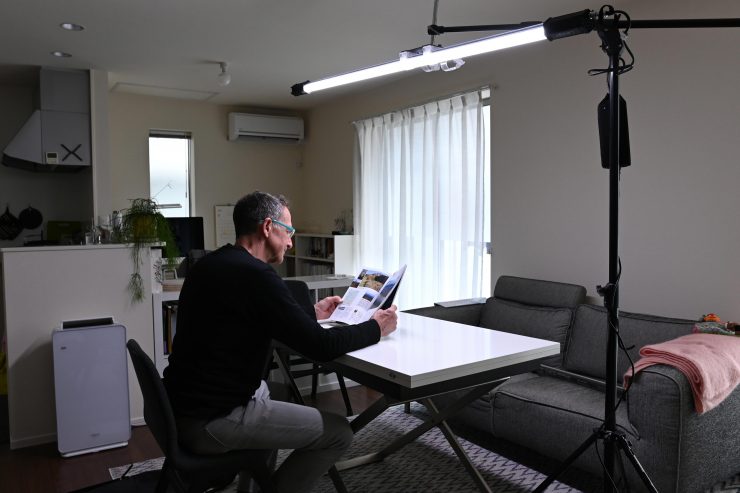
The AltaTubes from Ledgo are a range of tubular sources with wide color control and a form factor that makes them useful for discreet lighting effects and placement in confined or hard-to-reach places.
The lights were first shown at IBC 2019 last year. They come in a variety of sizes. For this review, I will be looking at the Alta 180C, 120C and 80C.
The tubes have a color temperature range of 2700K to 7500K in normal mode and a claimed high CRI of 98. It also has an RGB mode that gives the user access to custom colors.
The tube light is dimmable and while you can adjust color and light intensity locally on the fixture, you can also do it remotely from a console via onboard DMX or wirelessly with 2.4 GHz WiFi.
The AltaTube lights have seven lighting effects that include Storm, Cop Car, Candle Light, Hard Disco, Soft Disco, Monitor, and Multi-Flash. The lights draw between 80-180W depending on the version you choose. The Multifunctional RGB Tube Light runs on 100 to 240V mains power via the included adapter.
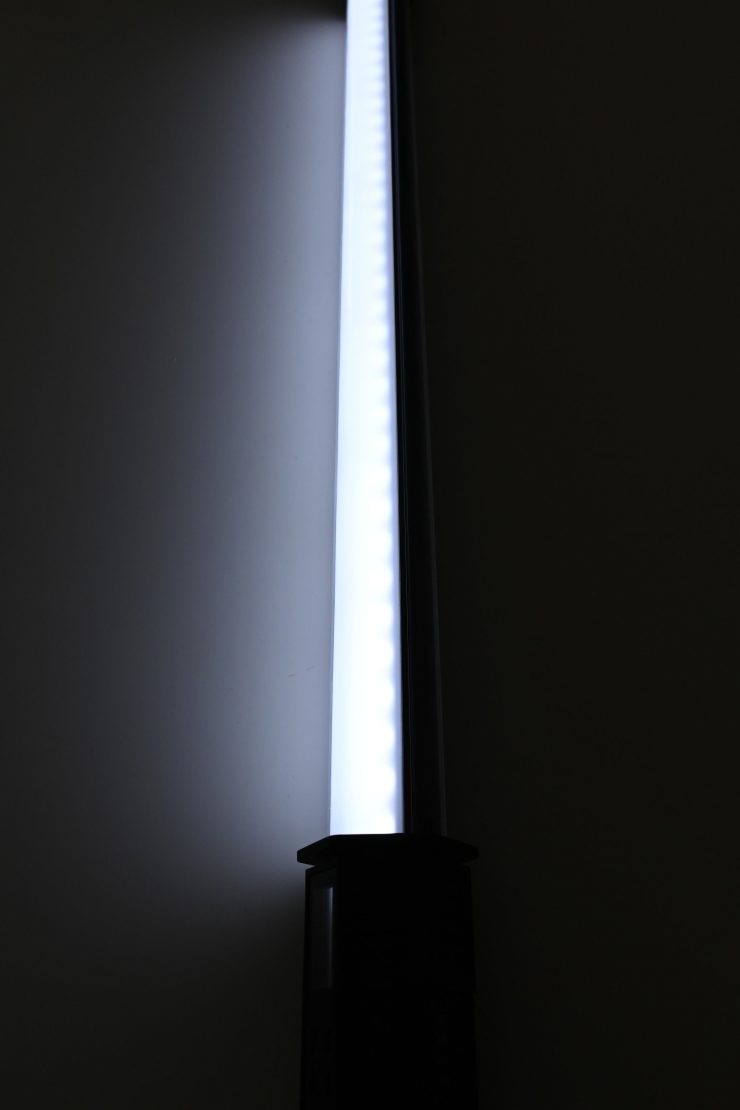
So now that you have some background on the lights, let’s dive in a little deeper.
Design & Concept
Tube lights are not a new concept. Fluorescent tubes have been around for a very long time, and in recent years we have seen quite a lot of RGB options coming to market.
The light has been designed to be an all-in-one unit, although you still need to attach a cable and power supply. Once you have done that you are good to go.
The all-in-one design makes it relatively quick to set up and use. The inherent problem with tube lights is you have to attach them to something unless you are simply laying it flat on the ground. That means you have to carry around a specific type of mount to use with the light. There are no physical mounting holes on the lights anywhere.
The other problem with long tube lights is when it comes to transportation and storage. Due to their length (this especially applies to the 180C) they are an awkward item to transport. Even though they come in a soft bag, this is not something you would want to check in on a plane. You would need to buy some sort of harder case or bag that could fit a very long light.
It is worth noting that the AsterTubes are T14 sized tubes, while tubes from Astera, Digital Sputnik, and Qusar Science are T12 sized tubes.
Three Different Versions
The AltaTube lights come in three different versions:
- AltaTube 80C (34.6″ / 87.88 cm)
- AltaTube 120C (50.4″ / 128 cm)
- AltaTube 180C (70″ / 177.8 cm)
Build Quality
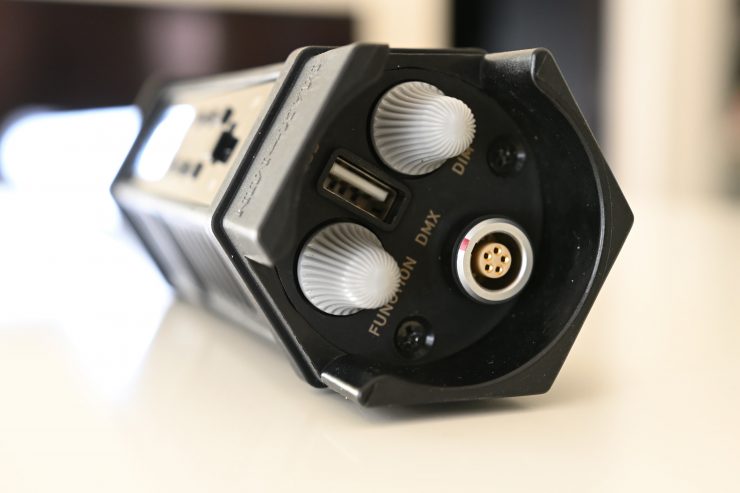
The build quality is ok, but there are a lot of plastic parts being used and the LCD display is of fairly average quality. The power connector is nice and robust.
It is hard to judge just how robust these lights are and how they would hold up to extensive use. I wish I could be more specific than that, but I’m in no position to comment on longevity after only spending a few weeks with the lights.
I’m not a big fan of having branding all over the lights and I think Lego could have made them a little more understated, especially since tube lights are often used as replacements for practicals.
Weight
All three lights have different weights. Please note, that the below-listed weights do not include the power supply.
| WEIGHT | |
| 80C | Approx. 1.55kg |
| 120C | Approx. 1.99kg |
| 180C | Approx. 2.5kg |
While the AltaTubes aren’t all that heavy, you have to factor in the power supply, mounting brackets and associated stands you also need to carry around with them.
Controls & Menu System
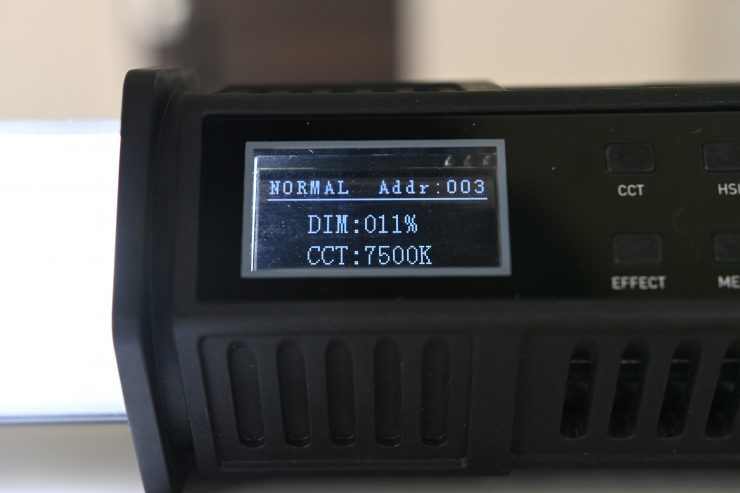
The controls and menu system are very straight forward and easy to use. This is not a light you need to pull out an instruction manual with.
I found making changes to be super simple and the light doesn’t have extensive menus that you get lost in.
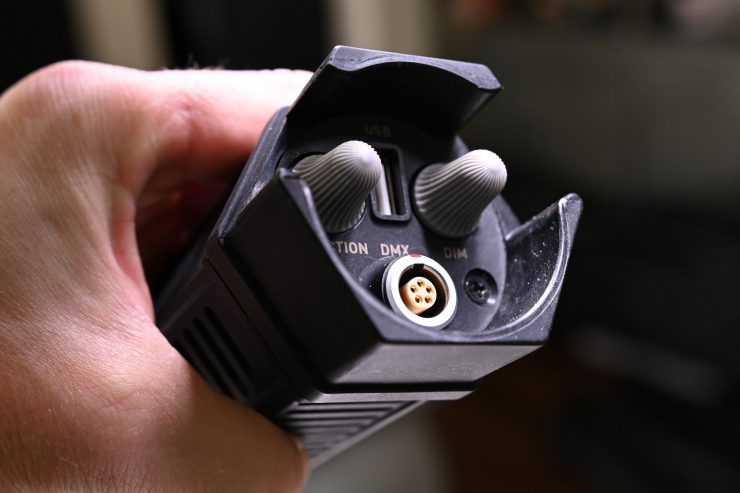
The dials for making changes to things such as Kelvin color temperature and intensity are easy to use. When you are adjusting the Kelvin color temperature you can only do it in increases or decreases of 100K. It would have been nice to be able to adjust the light more precisely.
The only problem I found when making changes is that the display and controls are facing the same direction as the light, so you end up getting blinded when you are making adjustments.
Operating Modes
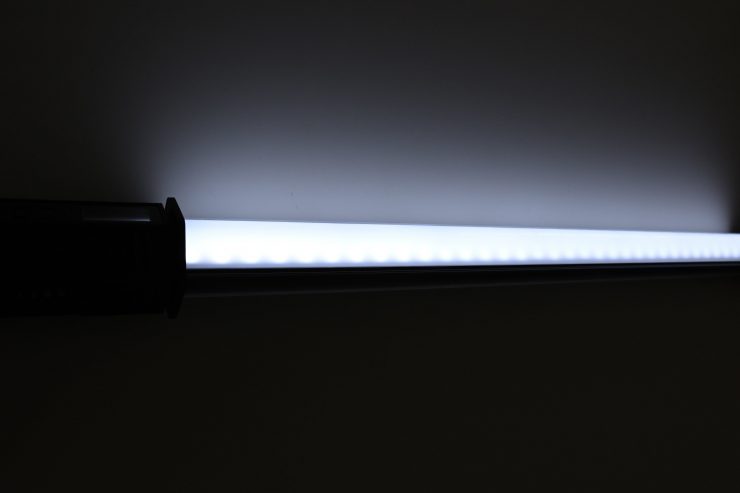
Depending on what operating mode you are in, the AltaTube lights can be configured to work in a variety of ways:
- CCT Mode
- HSI Mode
- Gel Mode
- Effects Mode
There is a normal CCT mode where you can adjust the Kelvin color temperature between 2700K to 7500K. Unfortunately, there is no +/- Green adjustment.
HSI mode lets you adjust the hue, saturation, and intensity of the light. In this mode, you can create a multitude of different colors and looks.
Gel Mode lets you recall various digital gel simulations. There is a good variety to choose from.
The Effects mode as its name suggests, lets you create effects such as Storm, Cop Car, Candle Light, Hard Disco, Soft Disco, Monitor, and Multi-Flash.
Beam Angle
The Beam angle is listed as being 360°, but that is clearly not correct. The lights beam angle is probably closer to being around 180-200 degrees.
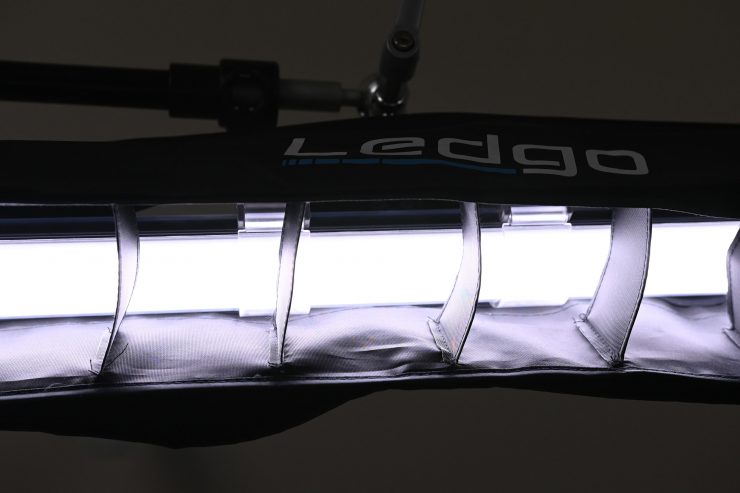
You can use optional honeycomb grids to suppress the spill. While these work reasonably well they are a little difficult to put on and I found them to be fiddly to use.
Power Draw
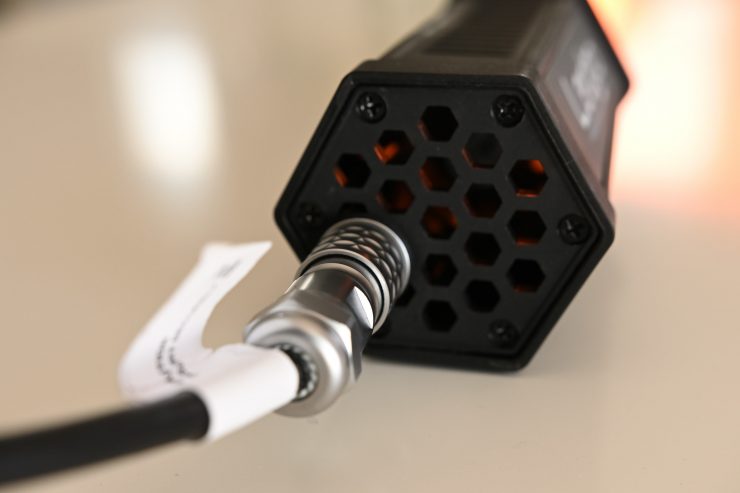
All three versions of the AltaTube lights have different power draws. Below you can see how much they draw:
| POWER DRAW | |
| 80C | 80W |
| 120C | 120W |
| 180C | 140W |
Now, you can run the tubes off batteries, but the loan unit I was sent didn’t come with any adapter cables to do so, so I wasn’t able to test this out :(.
To run the tubes off batteries you require a 26V battery which is far from ideal.
Fan Noise
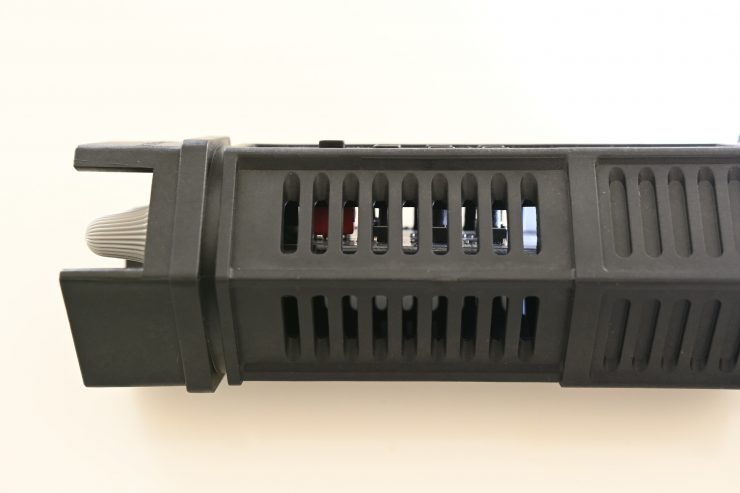
What Ledgo doesn’t want to mention in any of their marketing material is that the lights can be operated in three different modes: Silent, Normal, and Boost.
The AltaTubes have in-built fans and if you operate them in Normal or Boost mode they do make quite a bit of noise. In Normal mode, there is some noise and you can probably get away with it as it isn’t too close to any type of microphone. In Boost mode, the light is very loud and that makes it unsuitable for use when any audio needs to be recorded in a quiet room.
Mounting
Mounting tube lights is a little tricky. As the lights don’t have any physical mounting points you need to use them with the included mounting bracket.
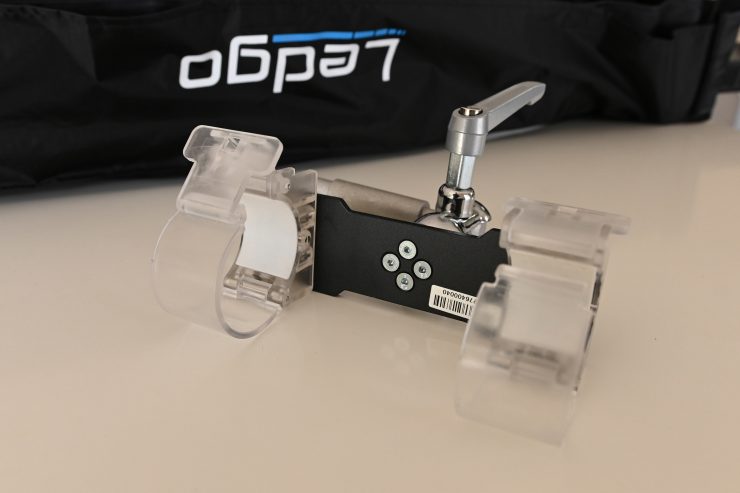
This bracket is made out of hard plastic and it is easy and quick to mount the tube. I’m not sure how well these would hold up in the field of time.
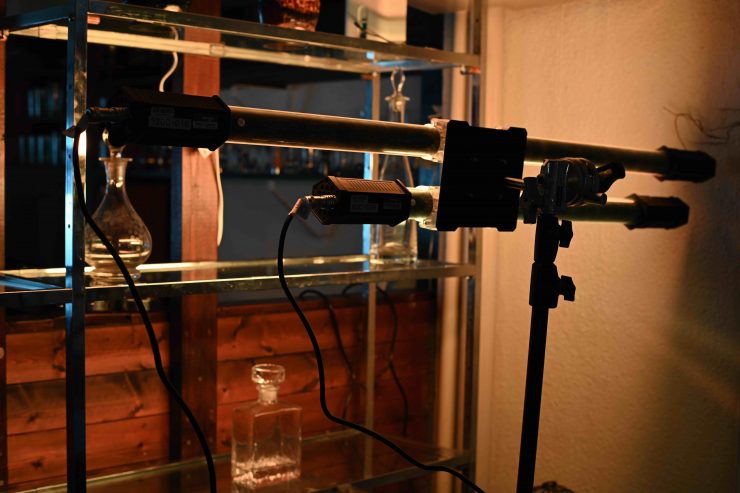
The mounting is relatively easy to do, but if you are mounting the lights horizontally you need to be mindful of the power cables sticking out.
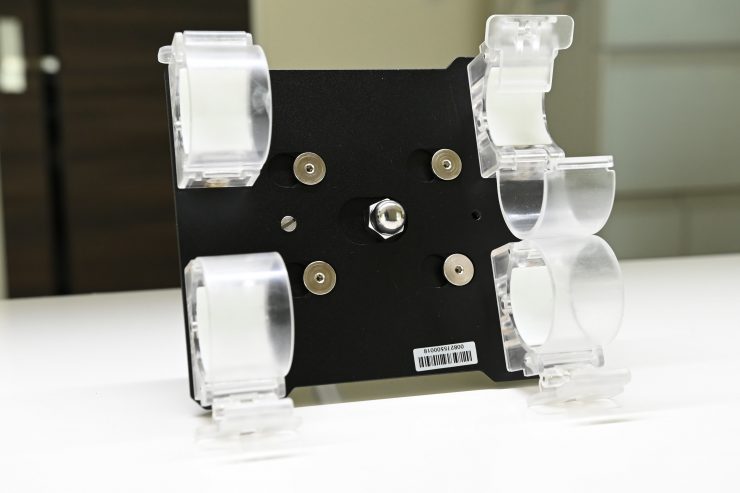
There are also a variety of other mounting solutions available, including mounts for multiple tubes so you can create arrays.
WiFi Control
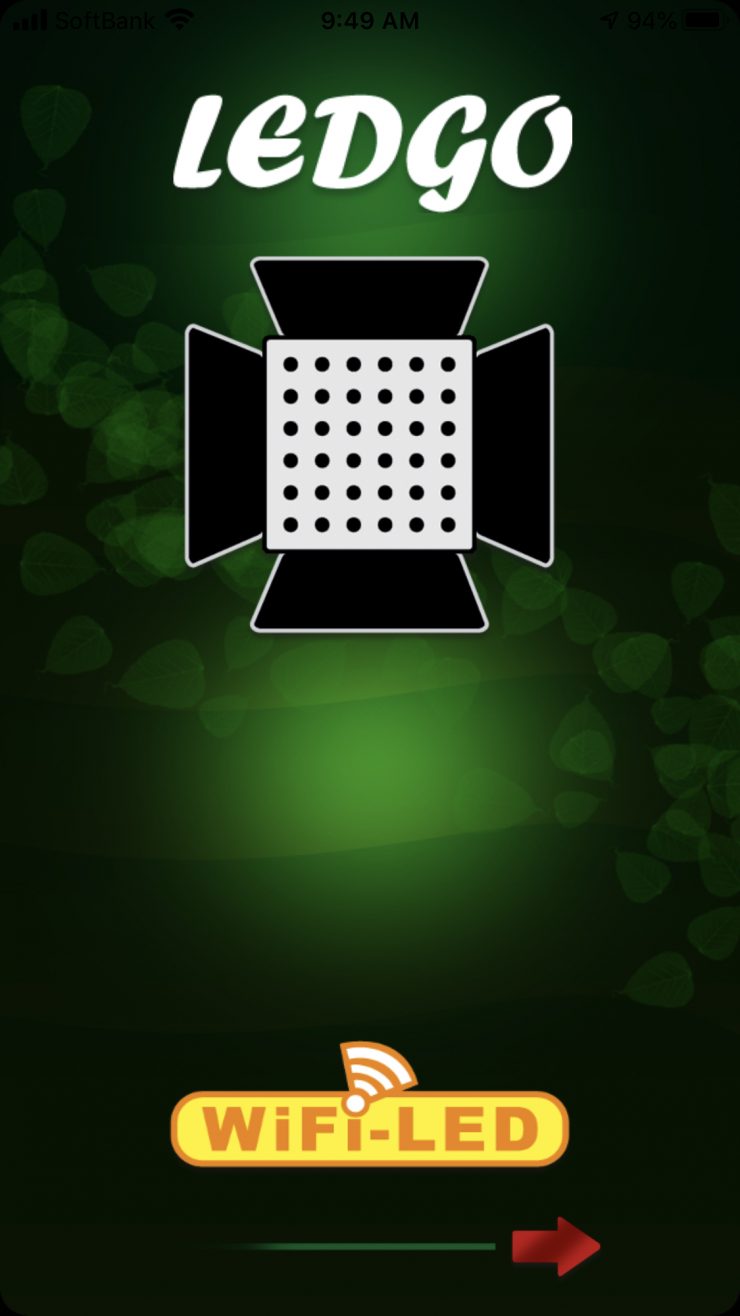
You can download the Ledgo WiFi LED iOS or Android app to control the AltaTubes remotely. The problem is this requires the purchase of an additional 2.4Ghz remote or WiFi transfer device.
Again, I wasn’t able to test this feature out as no such unit was supplied.
Photometrics
So now let’s get to the photometric results. I always test lights in this way so that I get a reference to how they compare to other fixtures. Results only tell part of the story and should never be used alone to judge a light. I have found from extensive testing over the years that certain lights that have good photometric results don’t always look good, and lights that have worse photometric scores can sometimes look better than their results indicate.
Different lights can also look different depending on what camera you happen to be using.
Output & Color Temperature Accuracy
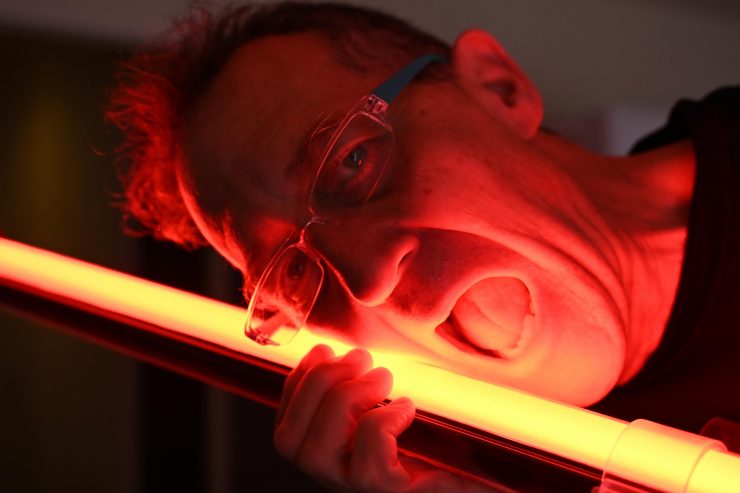
I tested tall three AltaTube lights at a variety of Kelvin color temperatures with a Sekonic C-800 Spectrometer to find out how much output the light had and how accurate the Kelvin color temperature reproduction was. All readings are taken at a distance of 1m (3.28ft) in a controlled environment.
AltaTube 180C
5600K
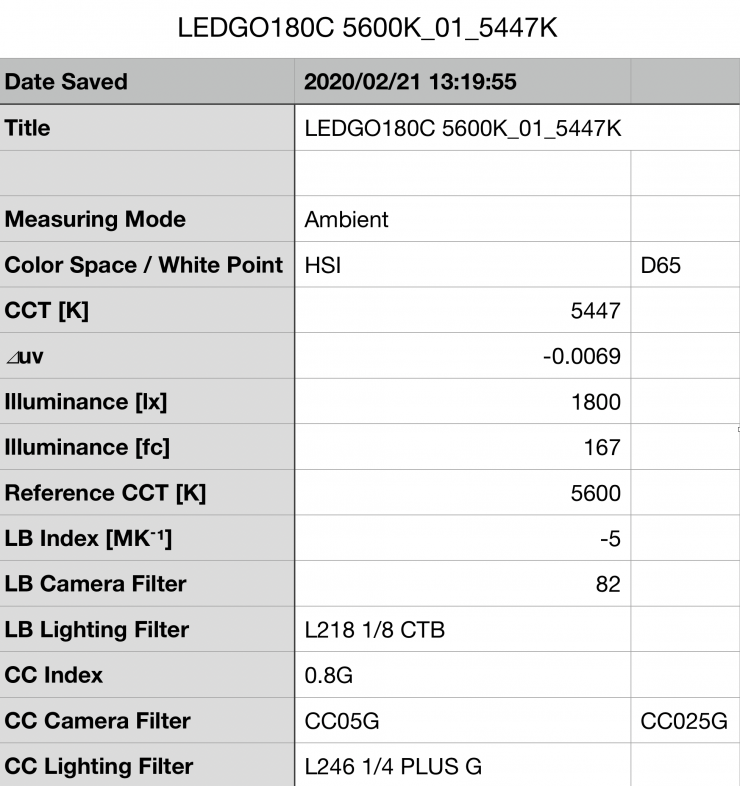
Above you can see the 180C recorded an output of 1800 lx (167 fc) when set at 5600K. This is a pretty good output for a single tube light.
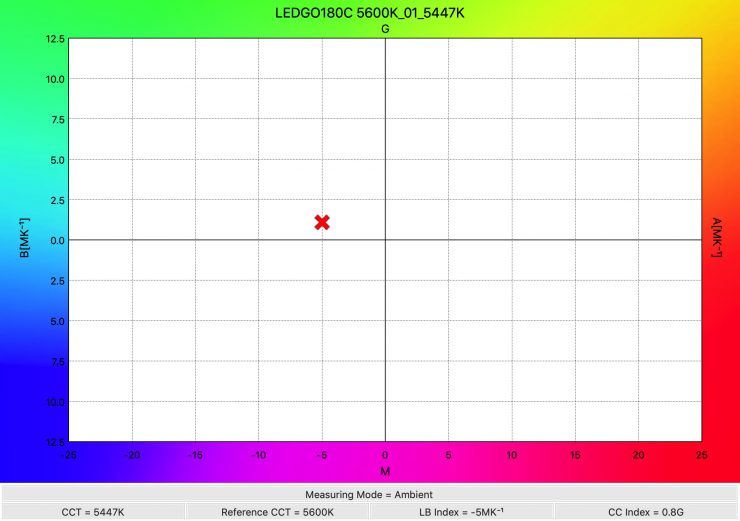
The 180C produced a Kelvin color temperature of 5447K. The light had a CC Index score of 0.8G. The Kelvin color temperature it produces was a bit low for a 5600K source, and the light goes have a slight lean towards green.
Now, all three versions of the light can be powered in three different modes:
- Normal
- Silent
- Boost
I decided to also test the light in all of these modes to see what the differences in output were.
| SILENT | NORMAL | BOOST | |
| AltaTube 180C 5600K | 731 lx | 1800 lx | 2670 lx |
As you can see the lights output varies quite a bit depending on what mode you are using it in. If you use the light in the Silent mode then the output is just under 60% of what it is in the Normal mode.
3200K
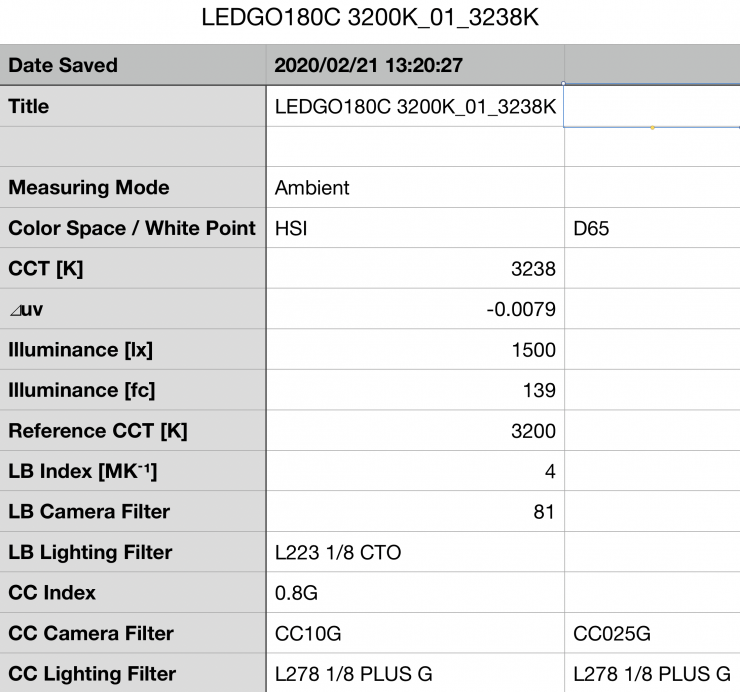
Above you can see the lights output when it was set at 3200K. It produced 1500 lx (139 fc), which was 16.7% less than the 1800 lx it produced at 5600K..
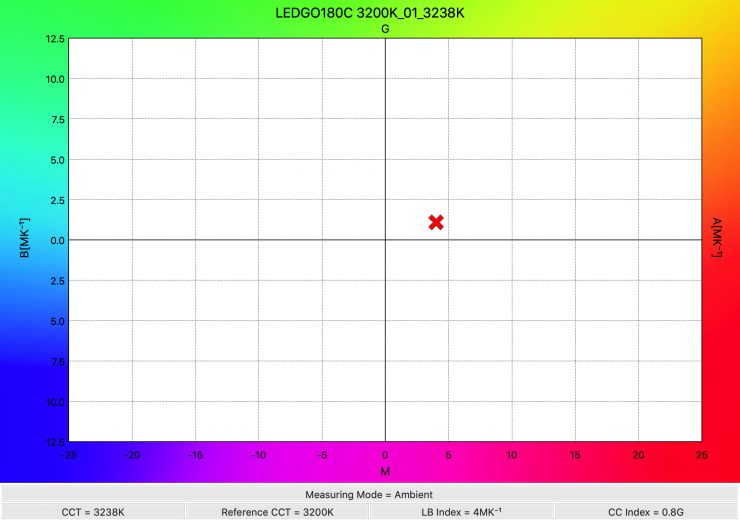
As far as Kelvin color temperature accuracy goes, it recorded a fairly accurate reading of 3238K. Just like at 5600K, the light has a push towards green.
| SILENT | NORMAL | BOOST | |
| AltaTube 180C 3200K | 763 lx | 1500 lx | 1930 lx |
As you can see the lights output varies quite a bit depending on what mode you are using it in. If you use the light in the Boost mode then the output is just over 26% higher than what it is in the Normal mode.
How does it perform at various Kelvin color temperatures in the Normal mode?
Summary of results:
| OUTPUT | KELVIN COLOR TEMPERATURE | |
| 2700K | 1420 lx | 2664K |
| 3200K | 1500 lx | 3238K |
| 4500K | 1630 lx | 4256K |
| 5600K | 1800 lx | 5447 K |
| 7500K | 1730 lx | 7140K |
These results show me that the lights output is fairly consistent at any color temperature.
The results also show me that the light is reasonably accurate when it comes to Kelvin color temperature reproduction, particularly at 3200K and below.
HSI
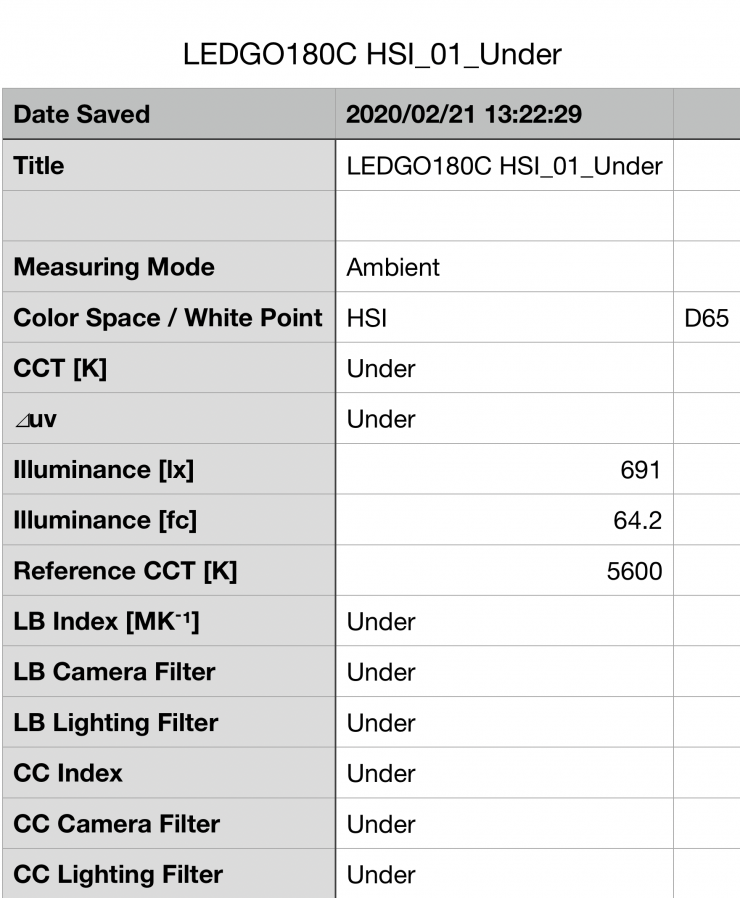
I also wanted to check how much output the light had when used in its HSI mode in the normal setting. I set the light at 100% intensity and recorded the output for a red color. As you can see the output is massively reduced when you start using the light in the HSI mode. Even in Boost mode, it only recorded an output of 944lx.
AltaTube 120C
5600K

Above you can see the 120C recorded an output of 1740 lx (162 fc) when set at 5600K.
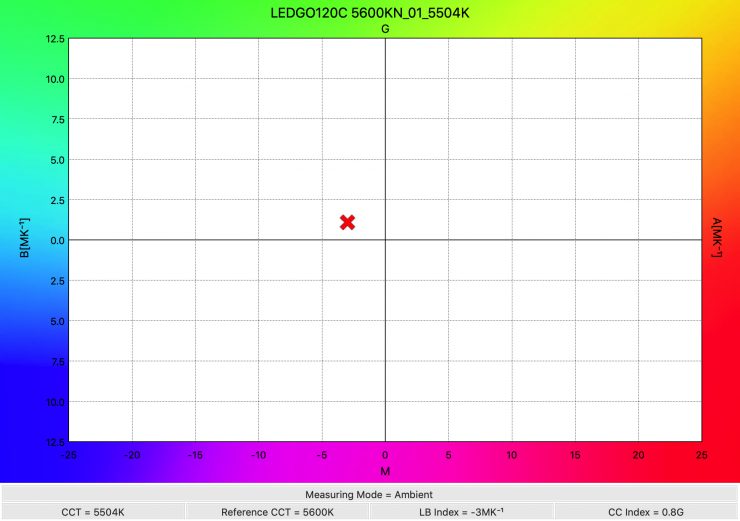
The 120C produced a Kelvin color temperature of 5504K. The light had a CC Index score of 0.8G. 5540K is pretty accurate, but the light has a slight push towards green.
Now, all three versions of the light can be powered in three different modes:
- Normal
- Silent
- Boost
I decided to also test the light in all of these modes to see what the differences in output were.
| SILENT | NORMAL | BOOST | |
| AltaTube 120C 5600K | 674 lx | 1740 lx | 2160 lx |
As you can see the lights output varies quite a bit depending on what mode you are using it in.
3200K
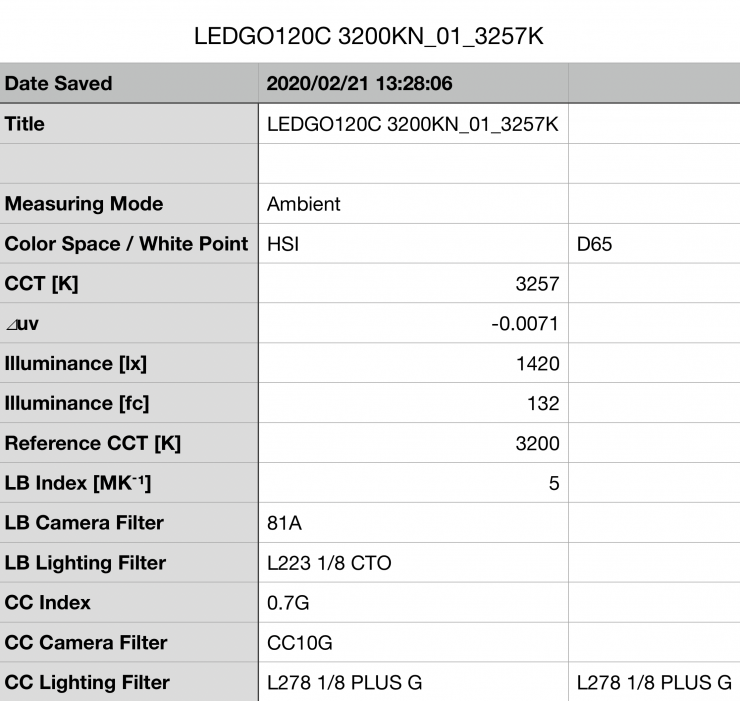
Above you can see the lights output when it was set at 3200K. It produced 1420 lx ( 132 fc), which was 22.5% less than the 1740 lx it produced at 5600K..
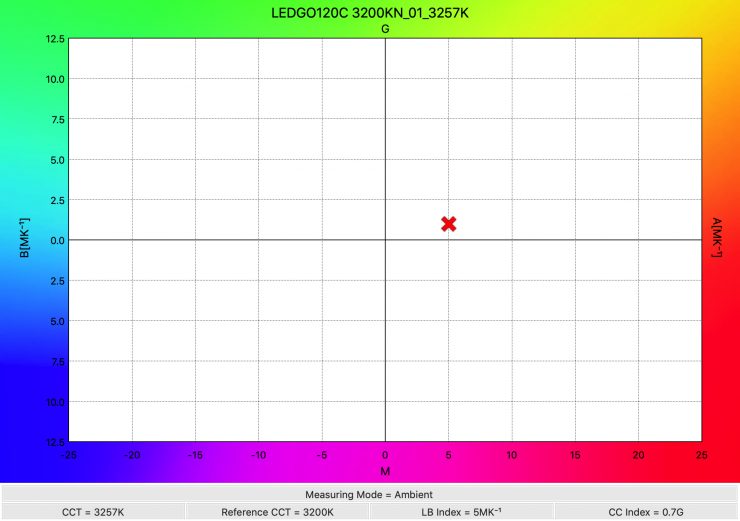
As far as Kelvin color temperature accuracy goes, it recorded a fairly accurate reading of 3257K.
How does it perform at various Kelvin color temperatures?
Summary of results:
| OUTPUT | KELVIN COLOR TEMPERATURE | |
| 2700K | 1230 lx | 2723K |
| 3200K | 1420 lx | 3257K |
| 4500K | 1750 lx | 4278K |
| 5600K | 1740 lx | 5504K |
| 7500K | 1470 lx | 7346K |
These results show me that the lights output is fairly varied depending on the Kelvin color temperature you choose.
The results also show me that the light is fairly accurate when it comes to Kelvin color temperature reproduction.
HSI
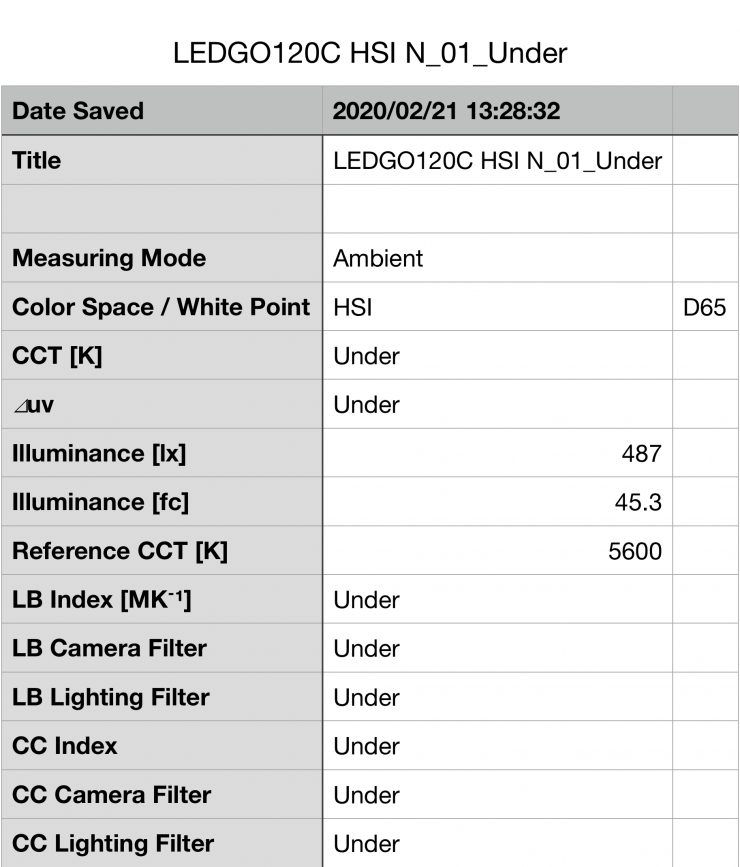
I also wanted to check how much output the light had when used in its HSI mode. I set the light at 100% intensity and recorded the output for a red color. The output was just 487 lx in the Normal setting.
AltaTube 80C
5600K
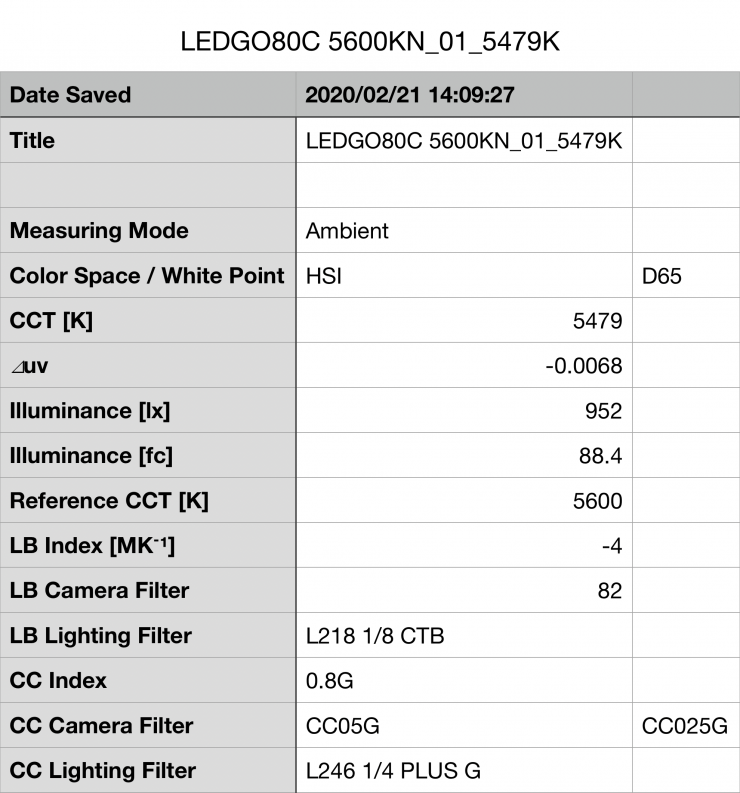
Above you can see the 80C recorded an output of 952 lx (88.4 fc) when set at 5600K.
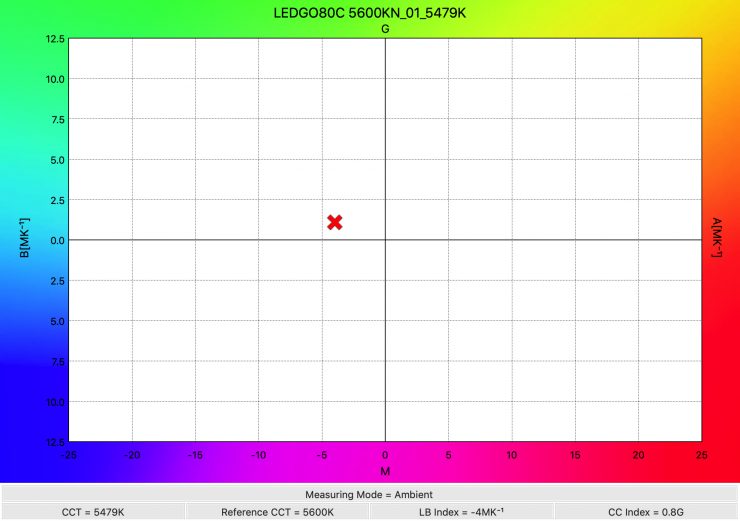
The 80C produced a Kelvin color temperature of 5479K. The light had a CC Index score of 0.8G. The Kelvin color temperature accuracy was ok, but the light does have a small skew towards green.
Now, all three versions of the light can be powered in three different modes:
- Normal
- Silent
- Boost
I decided to also test the light in all of these modes to see what the differences in output were.
| SILENT | NORMAL | BOOST | |
| AltaTube 80C 5600K | 466 lx | 952 lx | 1360 lx |
As you can see the lights output varies quite a bit depending on what mode you are using it in.
3200K
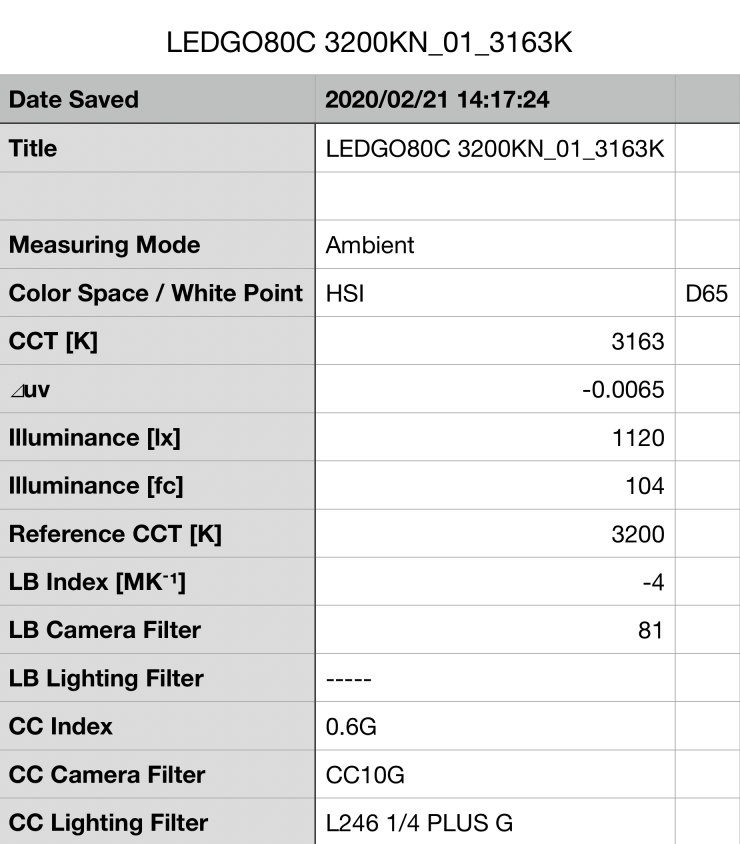
Above you can see the lights output when it was set at 3200K. It produced 1120 lx (104 fc), which was actually slightly more than the 952 lx it produced at 5600K..
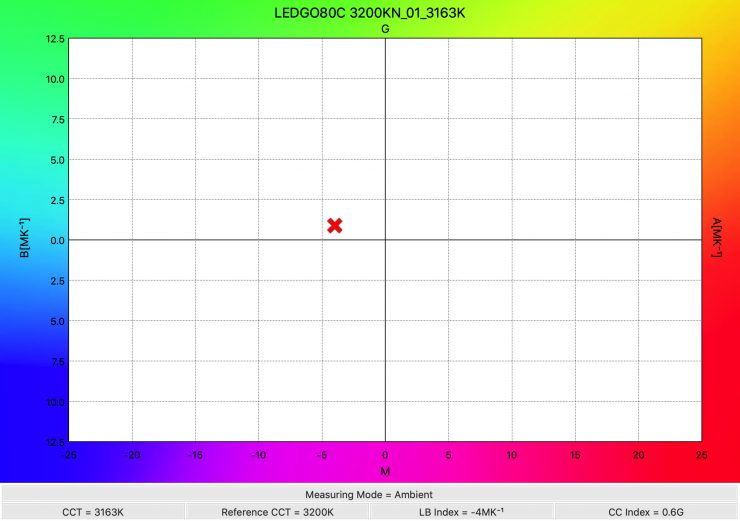
As far as Kelvin color temperature accuracy goes, it recorded a fairly accurate reading of 3163K.
How does it perform at various Kelvin color temperatures?
Summary of results:
| OUTPUT | KELVIN COLOR TEMPERATURE | |
| 2700K | 886 lx | 2760K |
| 3200K | 1120 lx | 3163K |
| 4500K | 1090 lx | 4286K |
| 5600K | 952lx | 5479K |
| 7500K | 967 lx | 7147K |
These results show me that the lights output is fairly consistent at any colr temperature.
The results also show me that the light is very accurate when it comes to Kelvin color temperature reproduction, particularly at 3200K and 5600K.
HSI
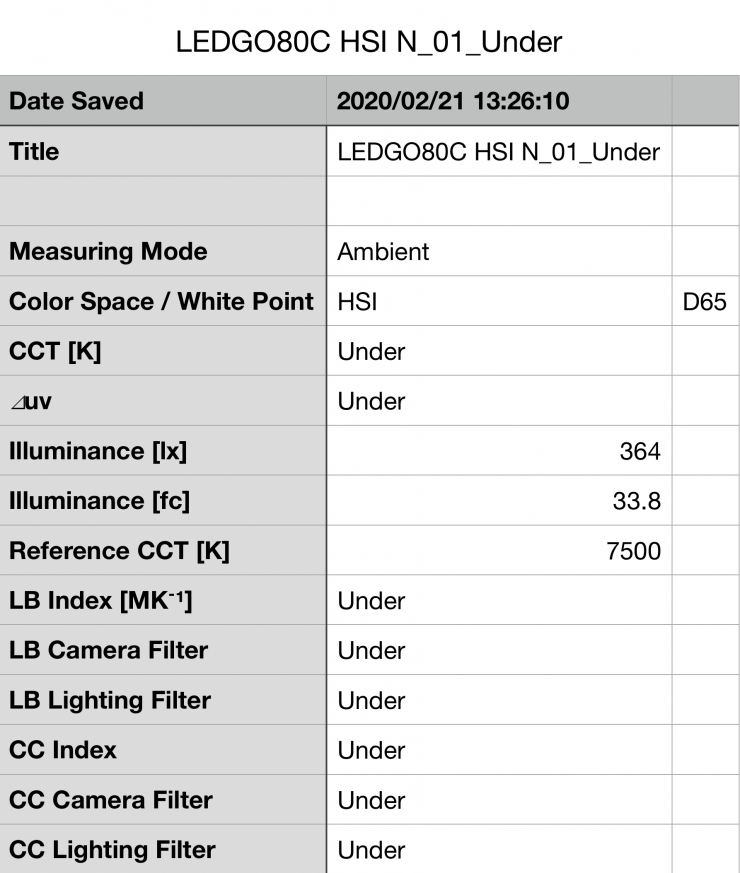
I also wanted to check how much output the light had when used in its HSI mode. I set the light at 100% intensity and recorded the output for a red color. The output was just 364 lx.
Color Rendering
So now that we have seen how much output the AltaTube lights produce, how do they perform when it comes to replicating accurate colors.? Well, let’s find out.
AltaTube 180C
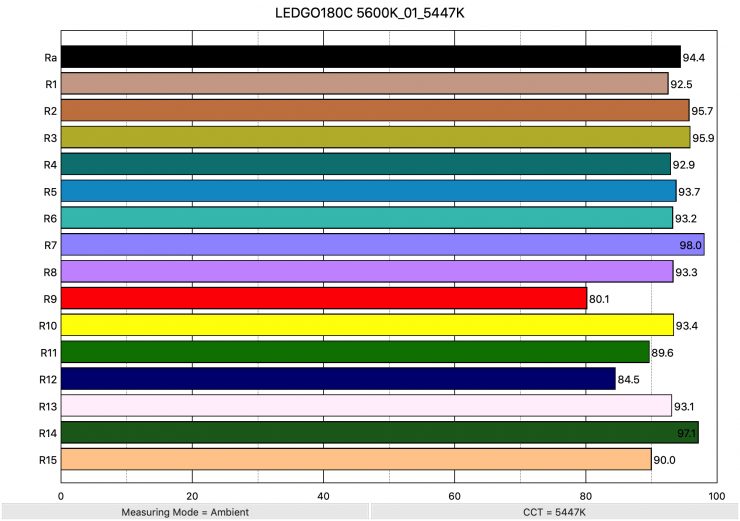
Above you can see that when the light was set at 5600K it recorded an average CRI (R1-R8) of 94.4 and an extended CRI (R1-R15) of 92.2. For replicating accurate skin tones it recorded 80.1 for R9 (red), 93.1 for R13 (closest to caucasian skin tones), and 90 for R15 (closest to Asian skin tones). These results were reasonably good.
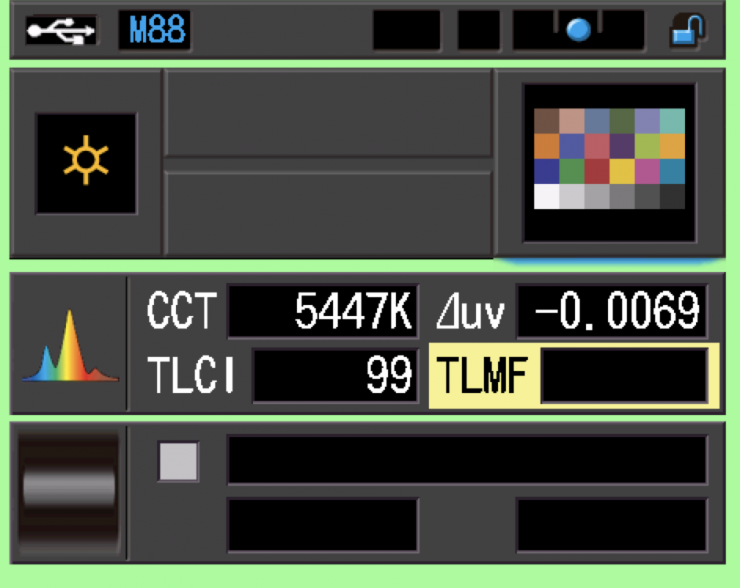
The light when set at 5600K also recorded a TLCI score of 99 which was excellent.
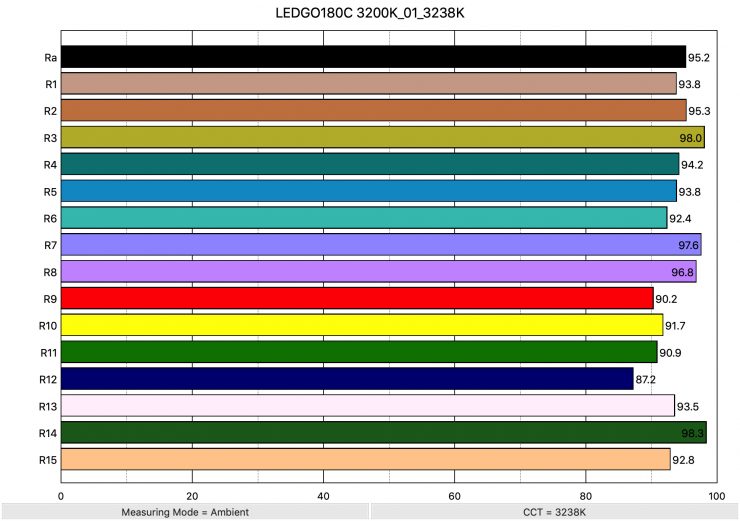
Above you can see the scores for when the light was used at 3200K. It recorded an average CRI (R1-R8) of 95.2 and an extended CRI (R1-R15) of 93.76. For replicating accurate skin tones it recorded 90.2 for R9 (red), 93.5 for R13 (closest to caucasian skin tones), and 92.8 for R15 (closest to Asian skin tones).
Just like at 5600K these results were pretty good,
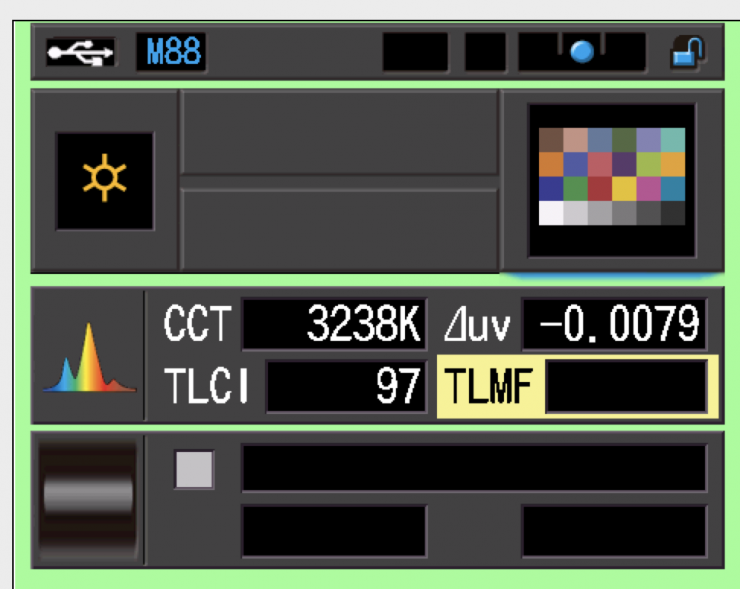
The light, when set at 3200K, recorded a TLCI score of 97.
AltaTube 120C
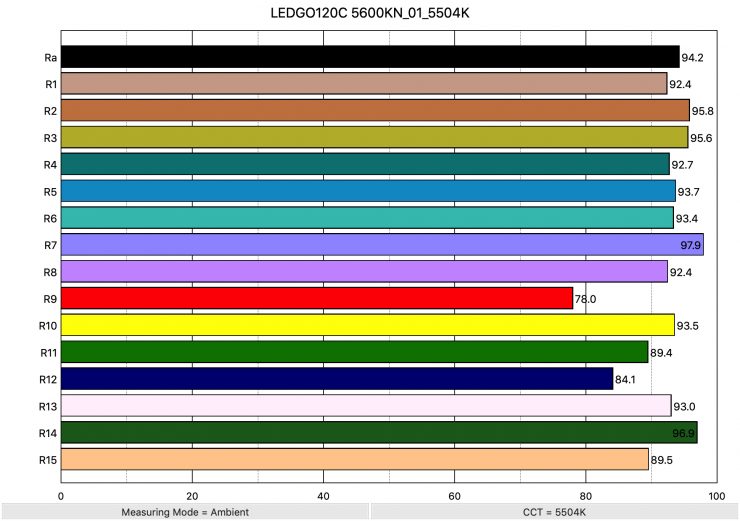
Above you can see that when the light was set at 5600K it recorded an average CRI (R1-R8) of 94.2 and an extended CRI (R1-R15) of 91.88. For replicating accurate skin tones it recorded for 78 for R9 (red), 93 for R13 (closest to caucasian skin tones), and 89.5 for R15 (closest to Asian skin tones). These were reasonably good results, but you can see why the light has a slight push towards green as it has trouble reproducing red.
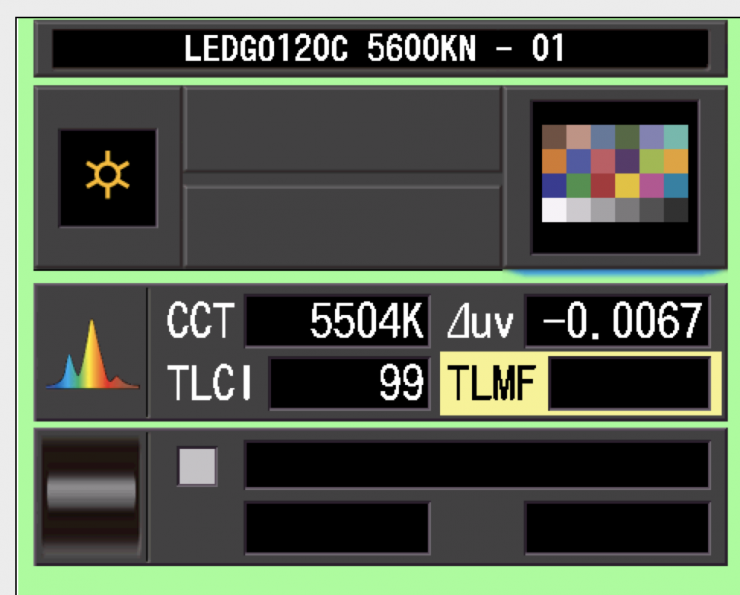
The light when set at 5600K also recorded a TLCI score of 97.
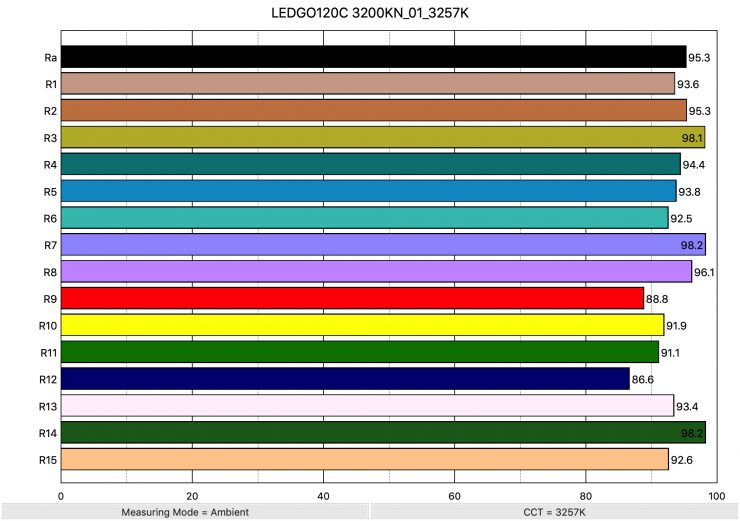
Above you can see the scores for when the light was used at 3200K. It recorded an average CRI (R1-R8) of 95.3 and an extended CRI (R1-R15) of 83.64. For replicating accurate skin tones it recorded 88.8 for R9 (red), 93.4 for R13 (closest to caucasian skin tones), and 92.6 for R15 (closest to Asian skin tones).
Just like at 5600K these results were reasonably good.
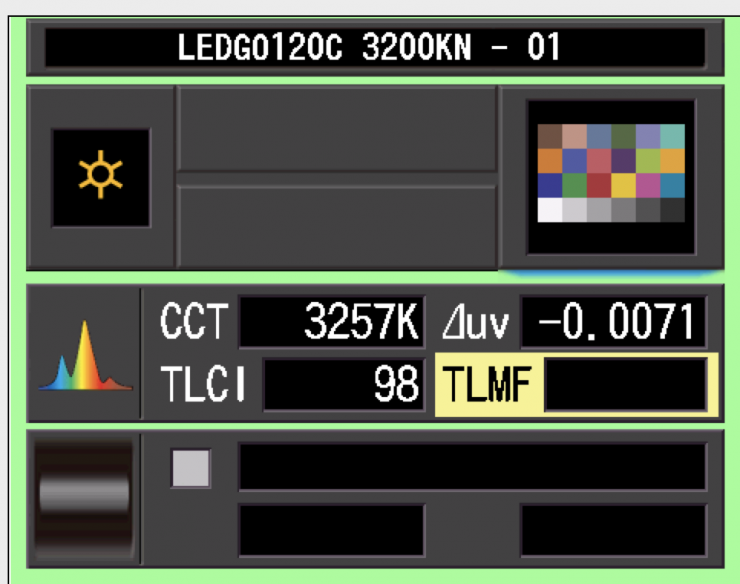
The light, when set at 3200K, recorded a TLCI score of 98.
AltaTube 80C
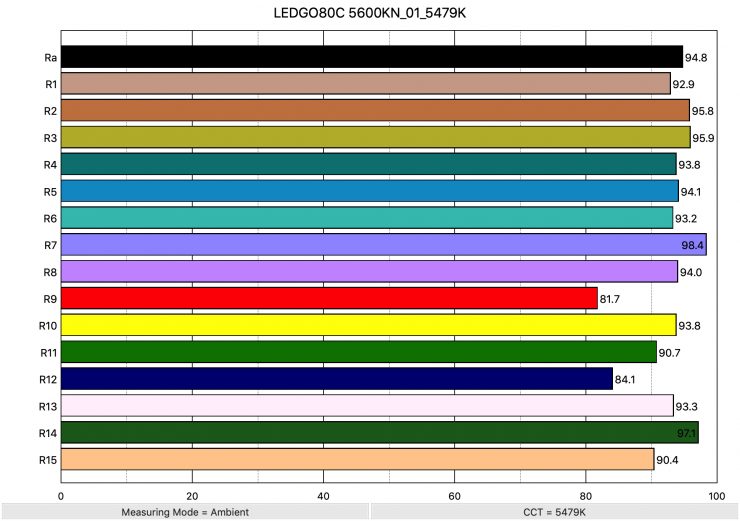
Above you can see that when the light was set at 5600K it recorded an average CRI (R1-R8) of 94.8 and an extended CRI (R1-R15) of 92.61. For replicating accurate skin tones it recorded 81.7 for R9 (red), 93.3 for R13 (closest to caucasian skin tones), and 90.4 for R15 (closest to Asian skin tones). These were reasonably good results
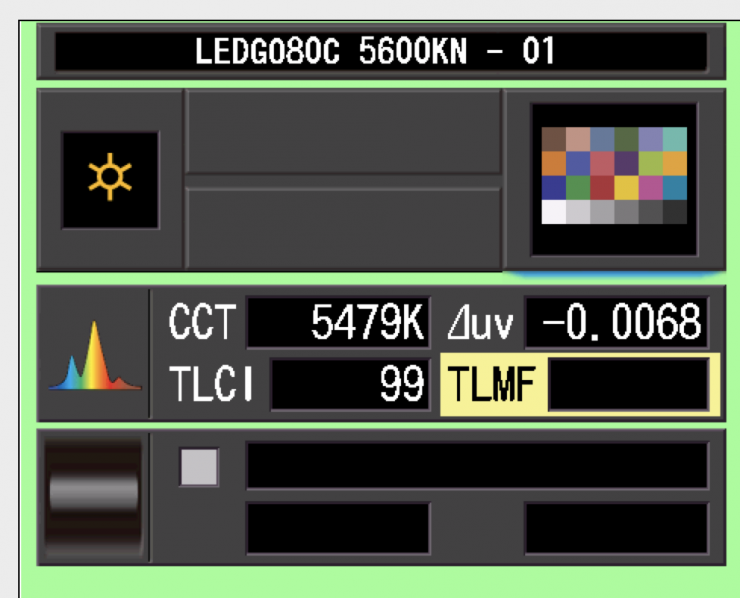
The light when set at 5600K also recorded a TLCI score of 97.
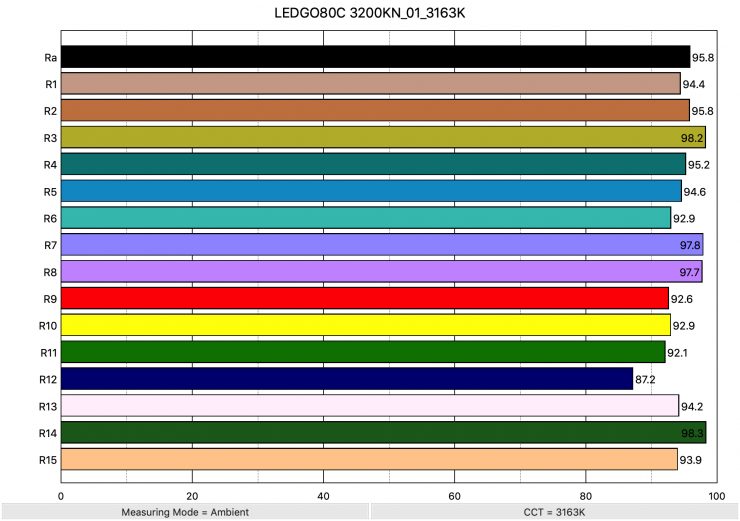
Above you can see the scores for when the light was used at 3200K. It recorded an average CRI (R1-R8) of 95.8 and an extended CRI (R1-R15) of 94.51. For replicating accurate skin tones it recorded 92.6 for R9 (red), 94.2 for R13 (closest to caucasian skin tones), and 93.9 for R15 (closest to Asian skin tones).
Just like at 5600K these results were pretty good.
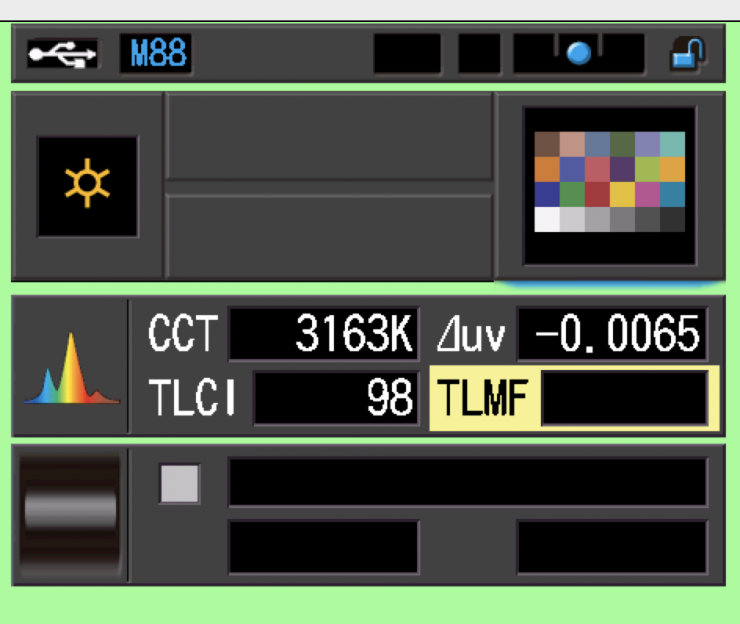
The light, when set at 3200K, recorded a TLCI score of 98.
SSI
SSI (Spectral Similarity Index) was developed by the Sci-Tech Council of the Academy. SSI gives me the ability to set any light as a standard, or use predefined standards (such as CIE D55), and then give other lights an SSI score based upon how well they will match standards such as CIE D55 measure spectral response and compare it directly against an ideal light source.
I’m not going to go into the SSI results of all the lights, so let’s focus on the AltaTube 180C.
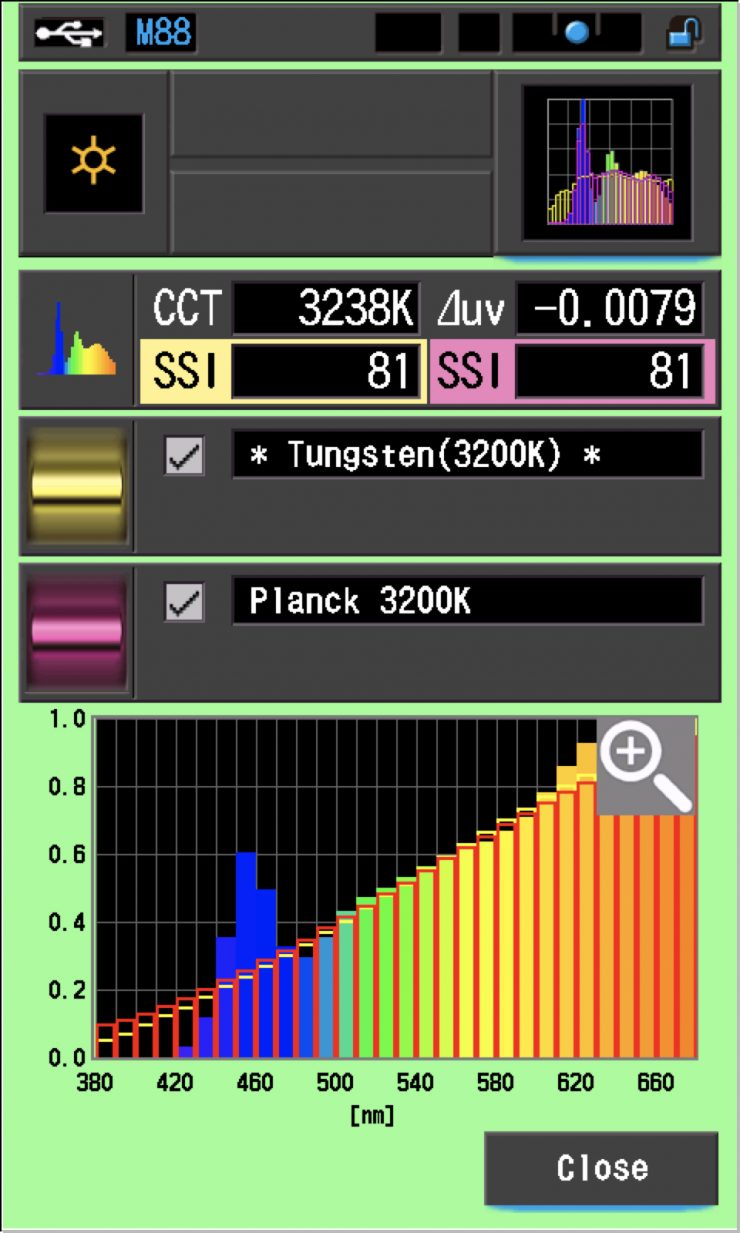
In this graph, the red bars indicate a perfect 3200 (Tungsten source. The Red bars indicate a Planck 3200K source. This lets us compare how close to a perfect 3200k lighting source the 180C is.
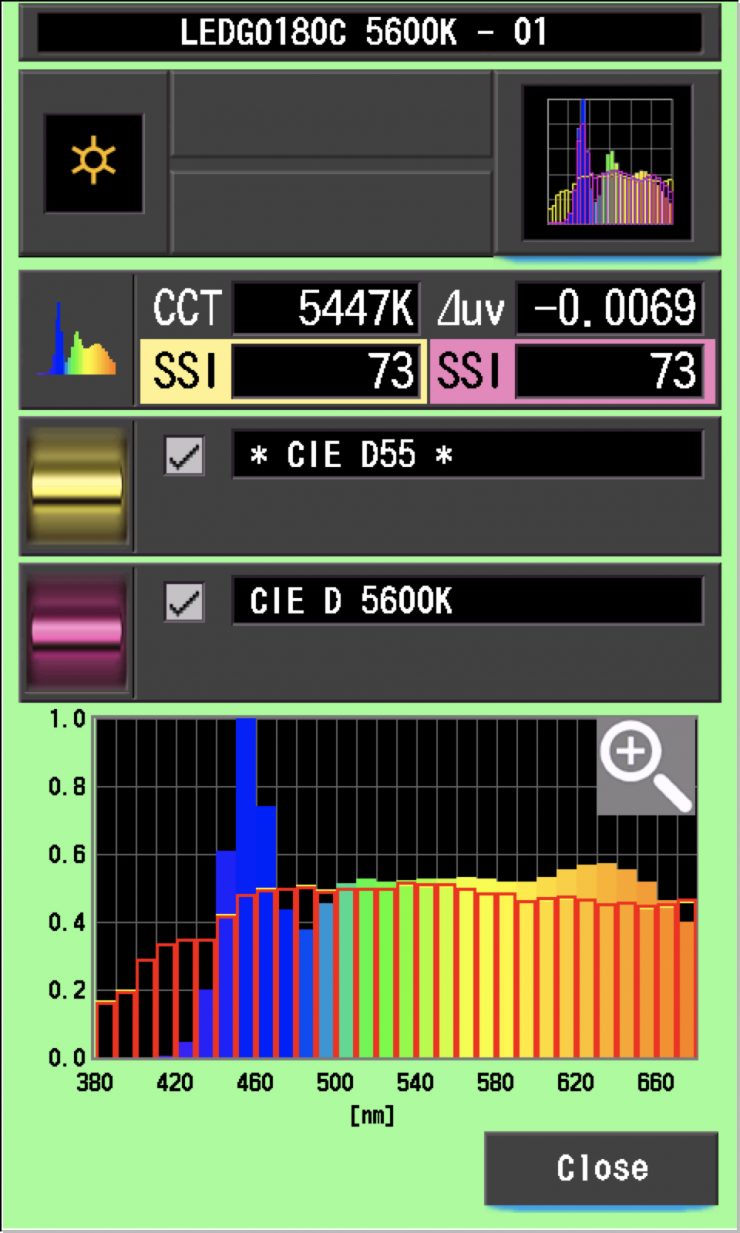
In this graph, the red bars indicate a perfect CIE D 5600K source. The Red bars indicate a perfect CIE D55 source. This lets us compare how close to a perfect 5600K lighting source the 180C is.
The scores show that the light does a pretty good job of accurately replicating a 3200K (Tungsten) source, but it’s not as good at replicating a 5600K source. In saying that, it is important to note that most LED lights only record SSI scores in the 70s when they are used at 5600K.
The main reason we want to record SSI scores is so we can see how well they match with other lights. I was curious to see how well the 180C matched the smaller 120C and 80C. In theory, they should be a perfect match. So were they?
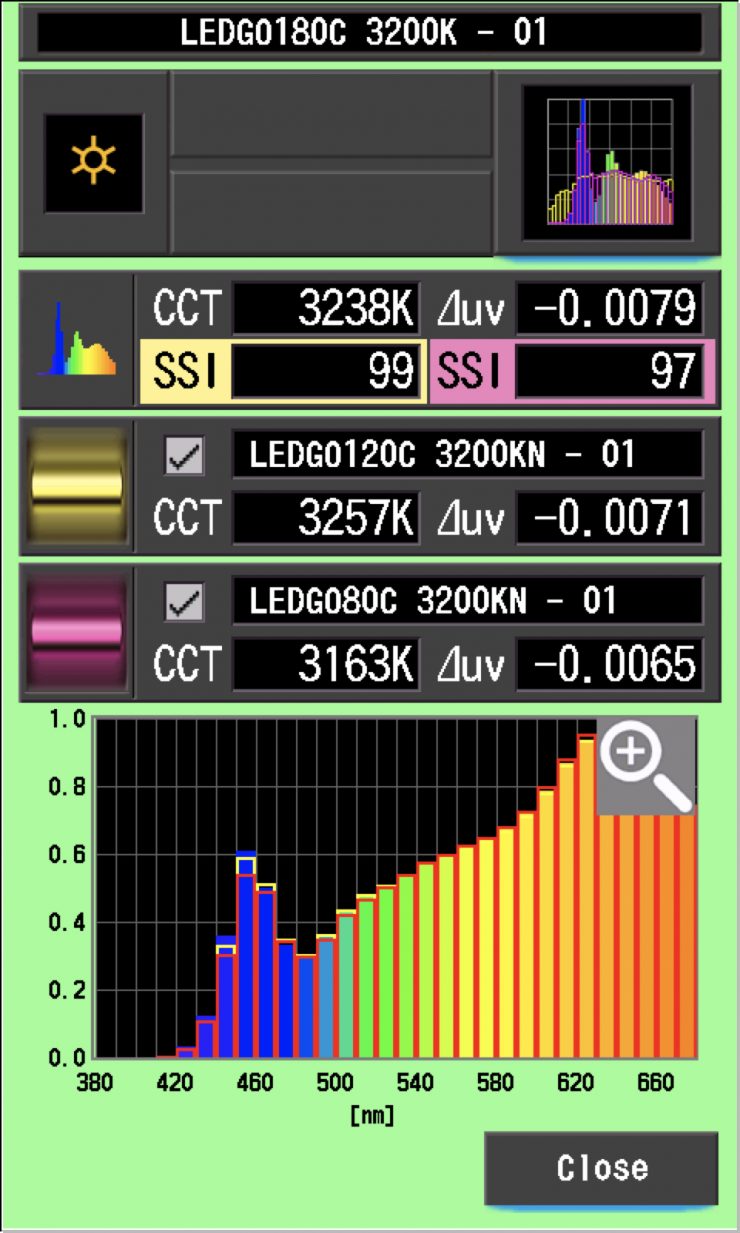
As you can see that all three lights are almost an exact match when used at 3200K. Any SSI scores you can get that is in the 90s when trying to match lights are going to get you pretty good consistent results.
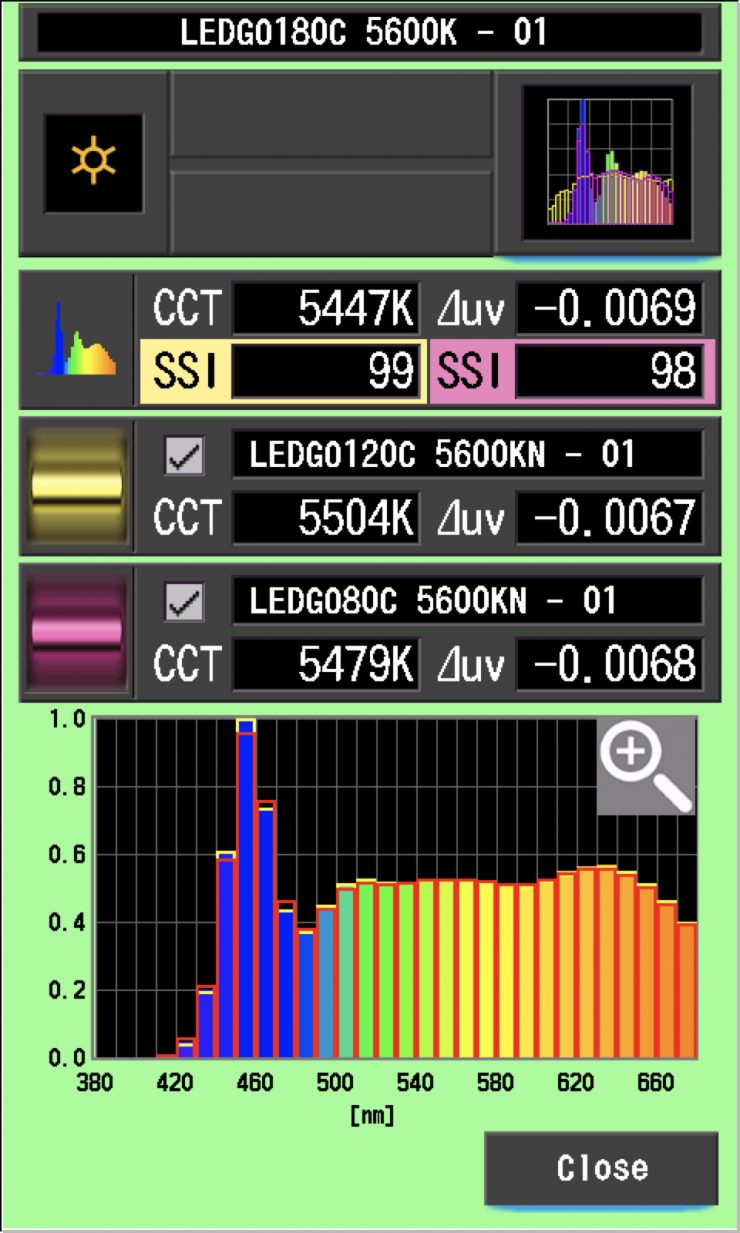
At 5600K, again, all three lights were almost a perfect match. These tests show me that you can use all three of the lights together and they will look almost identical.
Spectral Distribution
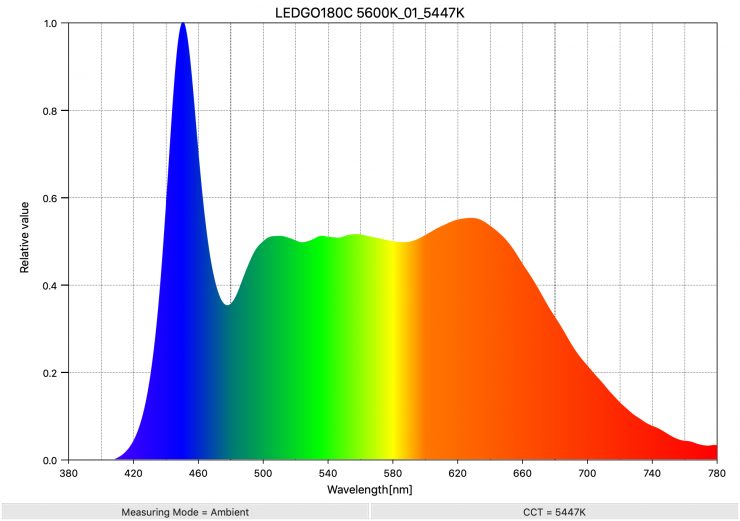
Above you can see the spectral distribution of the 180C when it is set at 5600K. The spectral distribution is reasonably full and there are no large unexpected spikes.
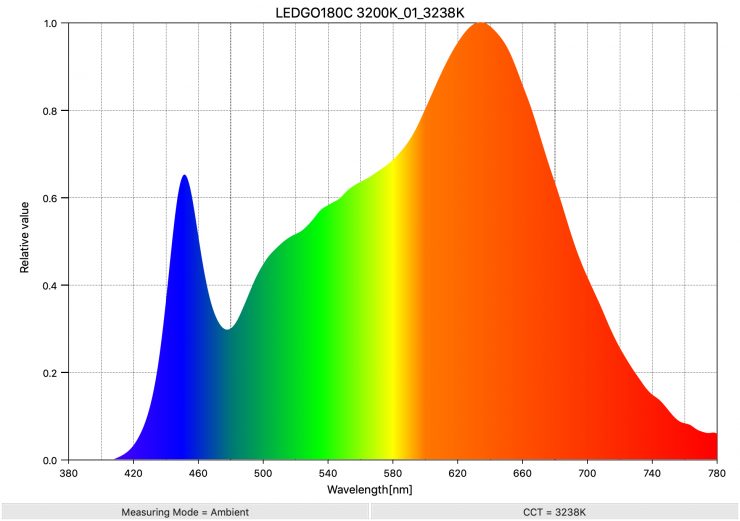
Above you can see the spectral distribution of the 180C when it is set at 3200K. The spectral distribution is pretty good for a LED light being used at 3200K.
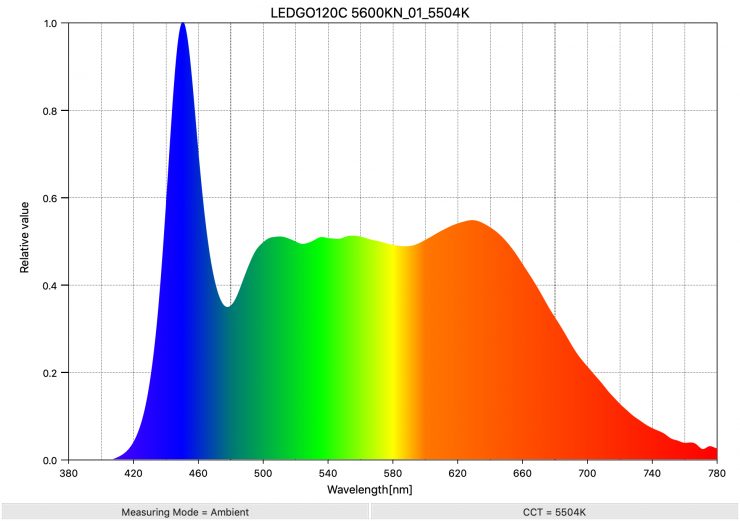
Above you can see the spectral distribution of the 120C when it is set at 5600K.
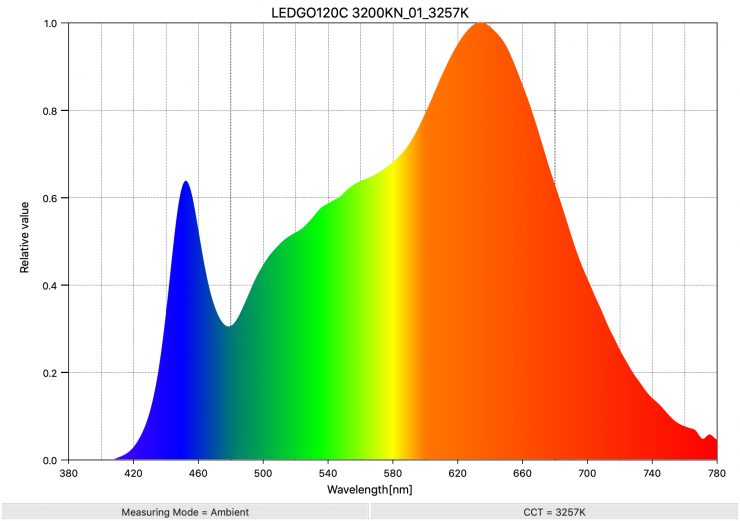
Above you can see the spectral distribution of the 120C when it is set at 3200K.
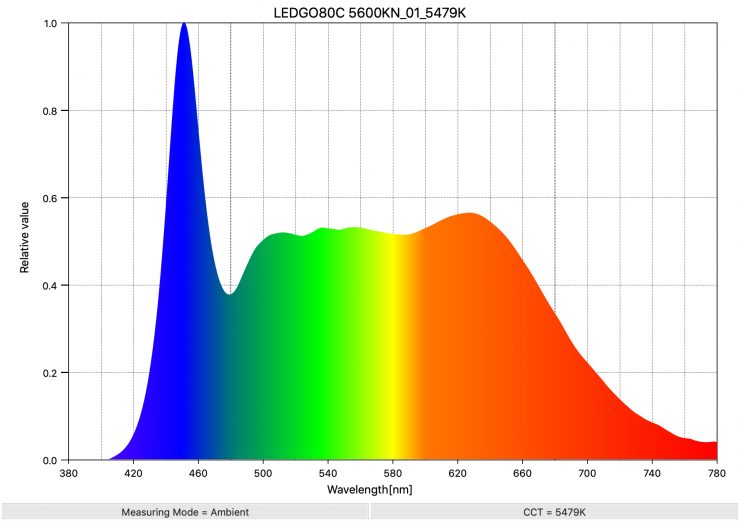
Above you can see the spectral distribution of the 80C when it is set at 5600K.
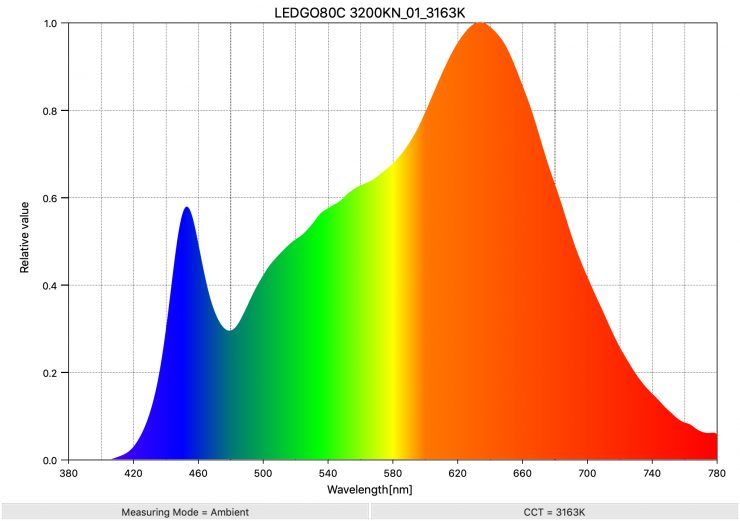
Above you can see the spectral distribution of the 80C when it is set at 3200K.
The spectral distribution of all three lights is almost identical.
Real-World Performance & Quality of Light
As I always say, photometric scores only tell you part of the story. So do the scores from the AltaTube lights translate into real-world performance? The simple answer is yes. The quality of the light that is coming from the Ledgo AstraTubes is pretty good.
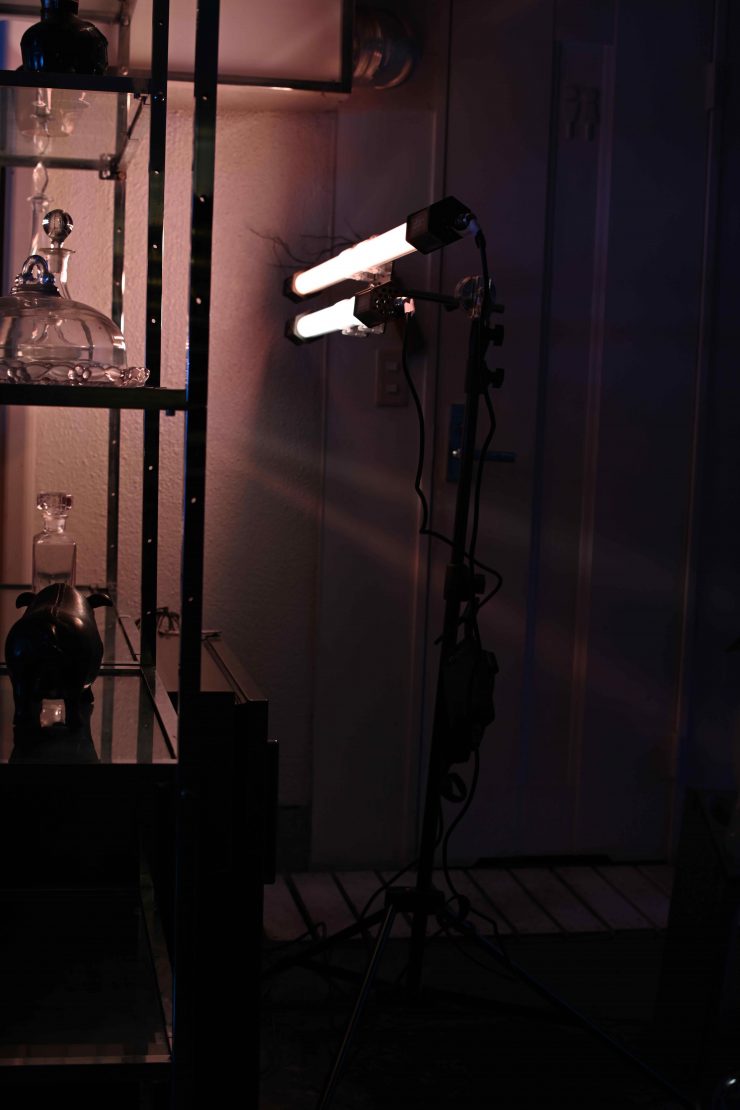
The output of the lights is impressive for single tube fixtures and that is probably going to be their biggest selling point.
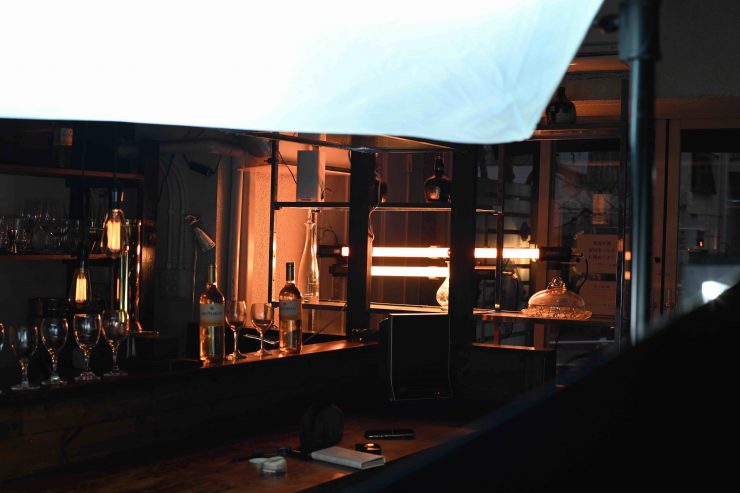
I used the lights as background fixtures on a recent shoot to provide some very warm ambient light. If placed correctly you can certainly blend these lights into a background so they aren’t noticeable.
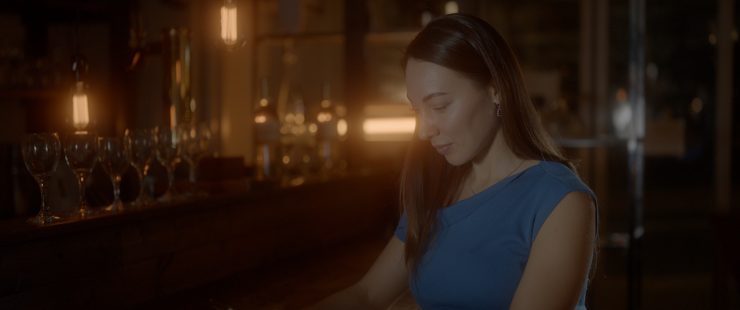
The lights certainly work well, but I almost found them to be too bright for certain applications. I had to have the Altatubes dimmed down to 2% for them to match the lighting I wanted in my scene.
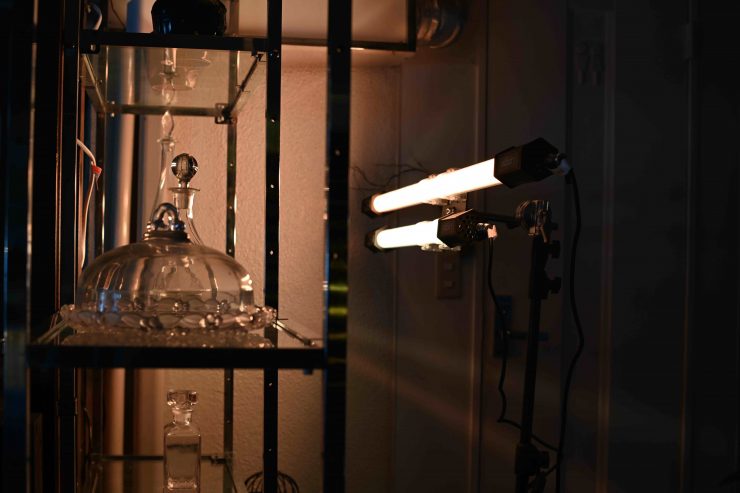
What surprised me slightly was that when I was using the HSI mode and I set both the 80C and the 120C to the exact same settings they didn’t match. The 80C had a slightly different color. This is something you need to be aware of.
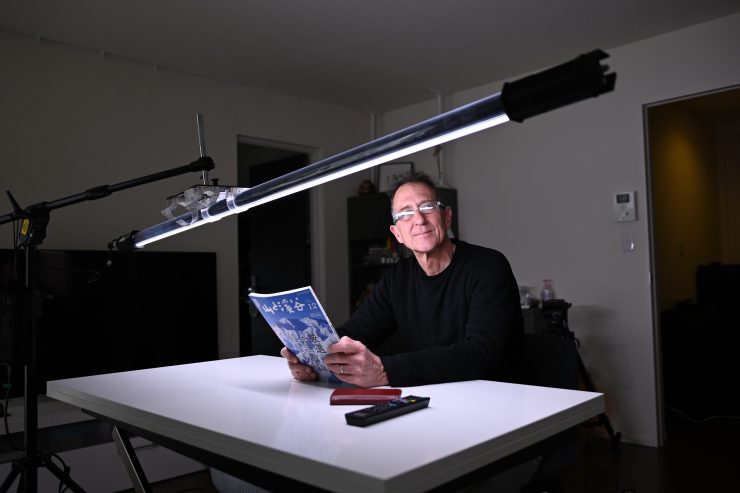
Above you can see some frames of what the light looks like when positioned above a table as a substitute for a practical.
For me personally, a tube light is probably not something that I would tend to use that often. While it is reasonably versatile, the physical size and difficulty of transportation probably outweigh its benefits for the style of work I do.
The caveats with these lights are that they don’t have in-built batteries, you can’t run them off a regular camera battery, and they are noisy if not used in the Normal power mode.
Who are they aimed at?
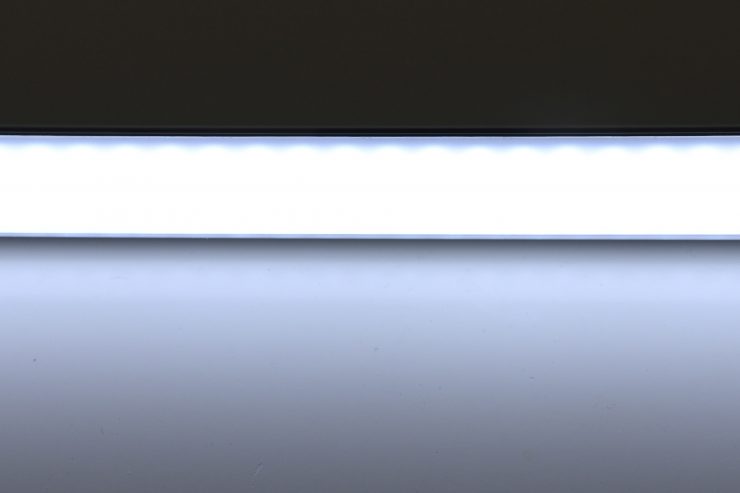
You could use the AltaTube lights for lots of different applications. Tube lights such as these are fairly versatile and you could use them as ascent lights, interview lights, replacements for practicals, etc, etc.
Having no in-built battery and given the limitation that they can only be remotely powered from a 26V battery, the AltaTubes are more suitable for indoor use.
Price & Availability
The lights range in price from $509 USD to $800 USD. Below are the prices:
Competition
The main competition comes in the form of lights such as the Digital Sputnik Voyager (4′), which costs $690 USD, the Astera TitanTube Power Kit ($850 USD), and the Came-TV Boltzen Andromeda Slim Tube LED Light 4FT ($348 USD).
The Astera Titan Tubes are perhaps the most well known and widely used. They have a host of features and the ability to be run off internal batteries for up to 20 hours.
AltaTube 80C Specifications
- Power: 80W
- Specifications
- Brightness Control: WiFi, 2.4G, DMX and Dimmer
- Colour Temperature: 2700K – 7500K
- CRI (Ra): >98
- Dimensions: 63.58 x 881mm
- Illumination: (LUX) 2700K: 985lux/92fc@1M/3.3′ | 134lux/12@3M/9.9′ 7500K: 1145lux/106fc@1M/3.3′ | 116lux/11fc@3M/9.9′
- Seven Lighting Effects Available: Storm, Cop Car, Candle Light, Hard Disco, Soft Disco, Monitor, Multi Flash
- Weight: Approx. 1.55kg
AltaTube 120C Specifications
- Power: 120W
- Brightness Control: WiFi, 2.4G, DMX and Dimmer
- Colour Temperature: 2700K – 7500K
- CRI (Ra): >98
- Dimensions: 63.58mm x 1281mm
- Illumination: (LUX) 2700K: 2052lux/191fc@1M/3.3′ | 333lux/31@3M/9.9′ | 7500K: 2275lux/211fc@1M/3.3′ | 282lux/26fc@3M/9.9′
- Seven Lighting Effects Available: Storm, Cop Car, Candle Light, Hard Disco, Soft Disco, Monitor, Multi Flash
- Weight: Approx. 1.99kg
AltaTube 180C Specifications
- Power: 180W
- Brightness Control: WiFi, 2.4G, DMX and Dimmer
- Colour Temperature: 2700K – 7500K
- CRI (Ra): >98
- Dimensions: 63.58 x 1781mm
- Illumination: (LUX) 2700K: 4595lux/427fc@1M/3.3′ | 716lux/67@3M/9.9′ | 7500K: 4266lux/396fc@1M/3.3′ | 654lux/67fc@3M/9.9′
- Seven Lighting Effects Available: Storm, Cop Car, Candle Light, Hard Disco, Soft Disco, Monitor, Multi Flash
- Weight: Approx. 2.5kg
Conclusion
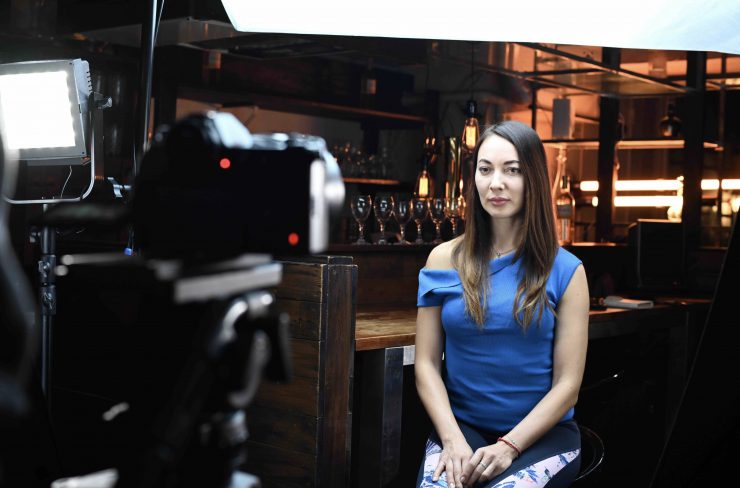
The Ledgo AltaTube lights have quite a lot of output, good color rendition and are easy to use.
Yes, they have a lot more output than competing systems, but is that enough to tempt potential buyers that they are a better option? I really think it comes down to how and why you want to use tube lights.
The lack of any physical mounting points on the fixtures means you are limited to using them with certain types of mounts. The fan noise is going to be a problem for anyone recording audio if you use the lights in the Boost mode. Even the normal mode is a little too loud for my liking.
I don’t want to harp on about the negative aspects, because the AltaTubes are actually a pretty good product. The light they produce is nice and they are straight forward and easy to use. The 180C is probably my favorite of the three models. Yes, it is a pain to transport, but having a very long tube light maker it ideal as a replacement for a practical source for use over tables, etc. I also like to stack the lights together in an array so you can produce one large source.
There is no such thing as a perfect light, and tube lights, in general, are filled with compromises that you need to be willing to accept. While you could use them for a whole range of different applications, they are clearly more suited to certain lighting requirements than others.
It is probably best to think of the Altatubes as a different type of solution to say an Astera Titan Tube. The Astera Titan Tubes are probably a better solution for use as practicals because of the built-in battery and because they aren’t as bright, whereas the AltaTubes are probably a better choice if you want higher output and the ability to use a tube light as a key source.
At the end of the day, I enjoyed using the Ledgo AltaTube lights, and despite the few issues I had with them they produced good results. If you are looking for a high output RGB tube light they are worth considering.

